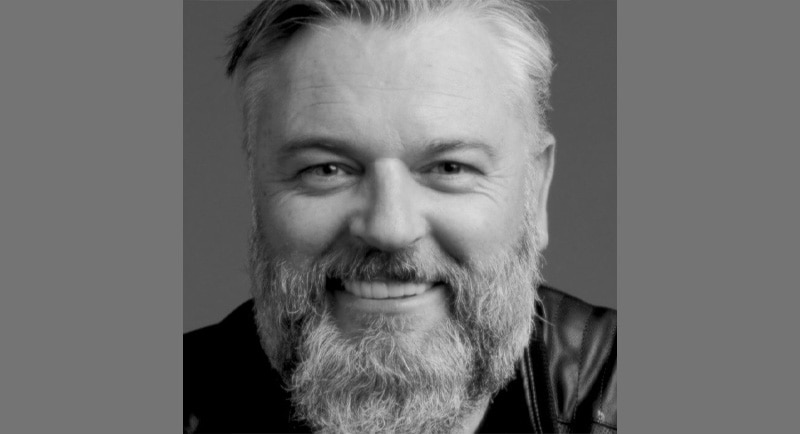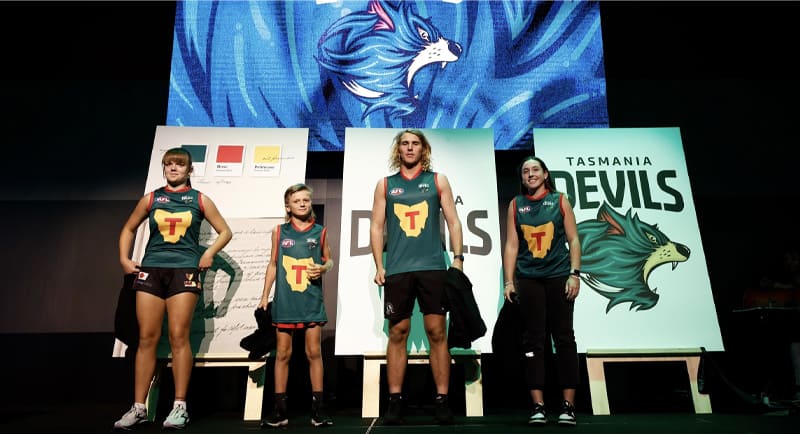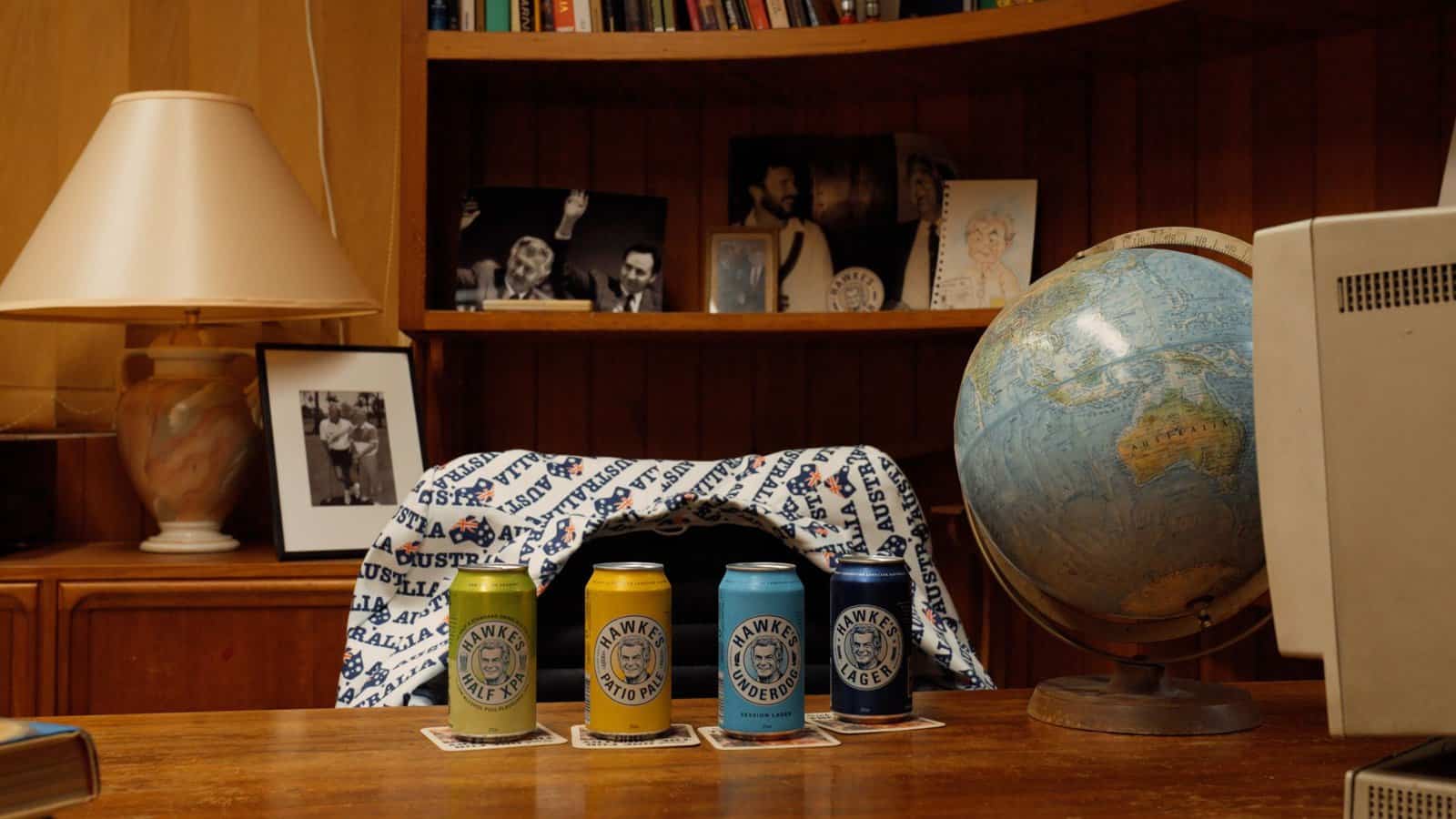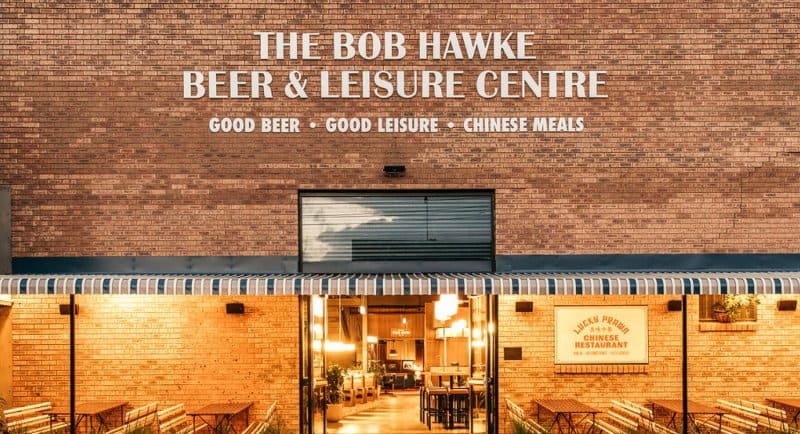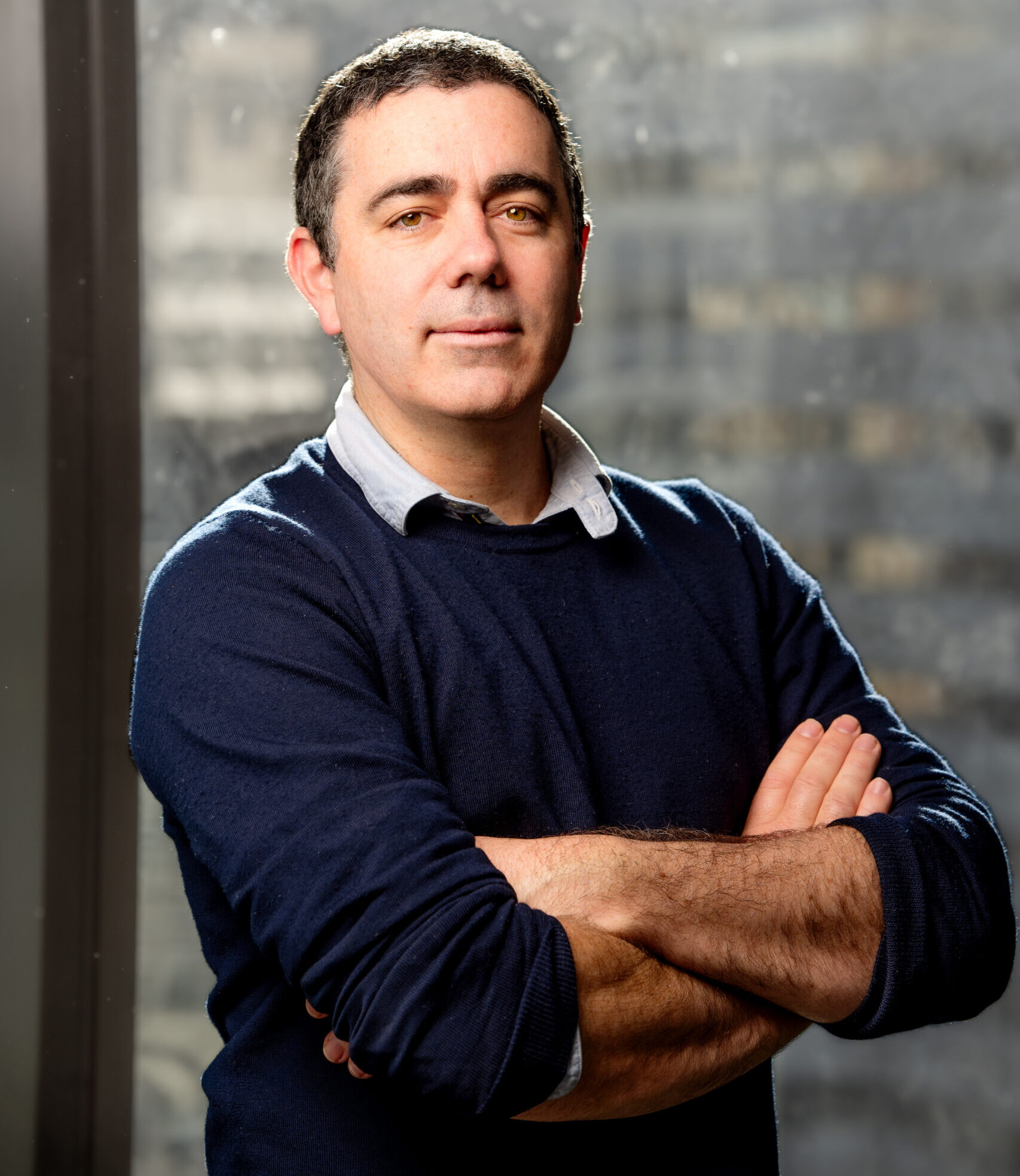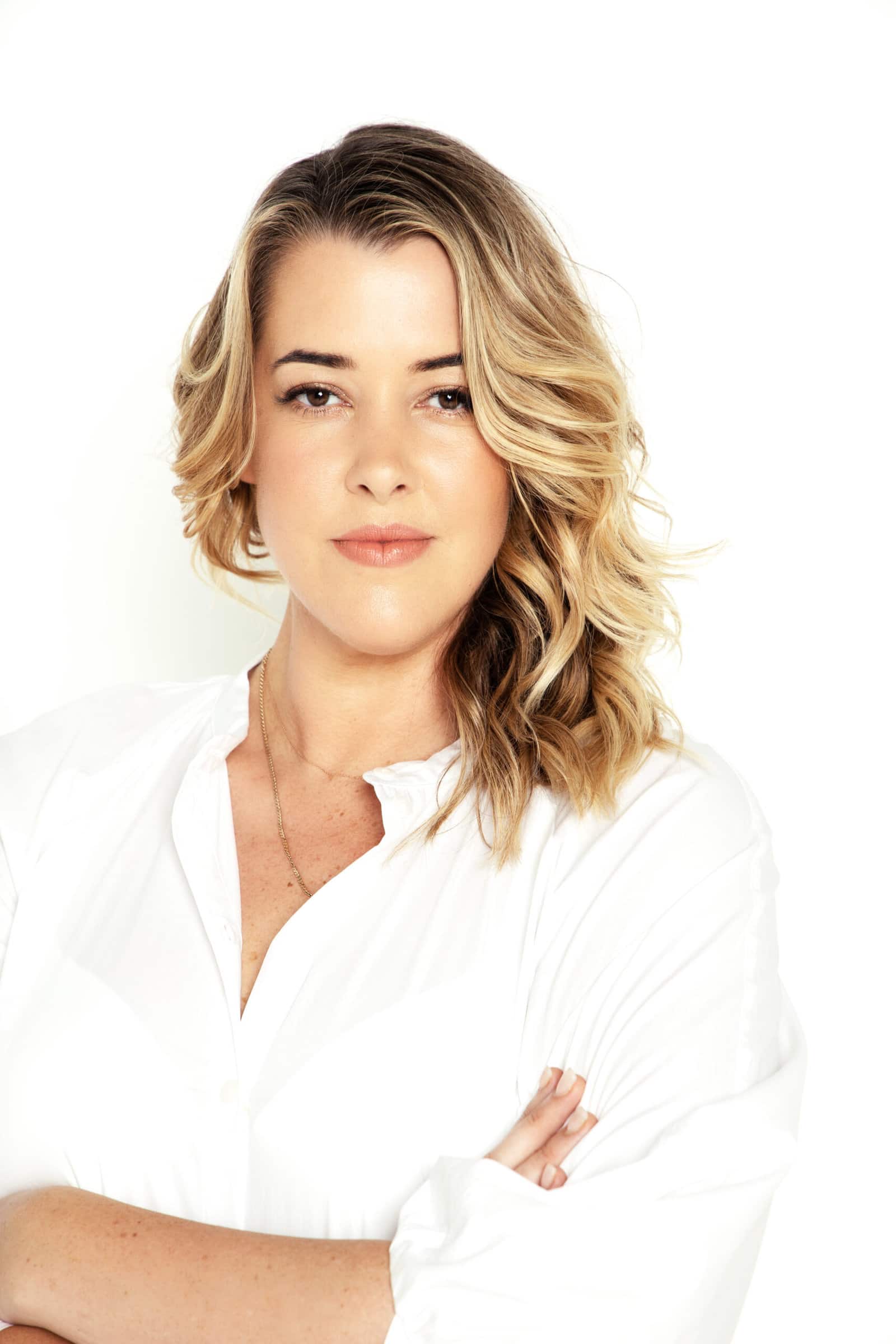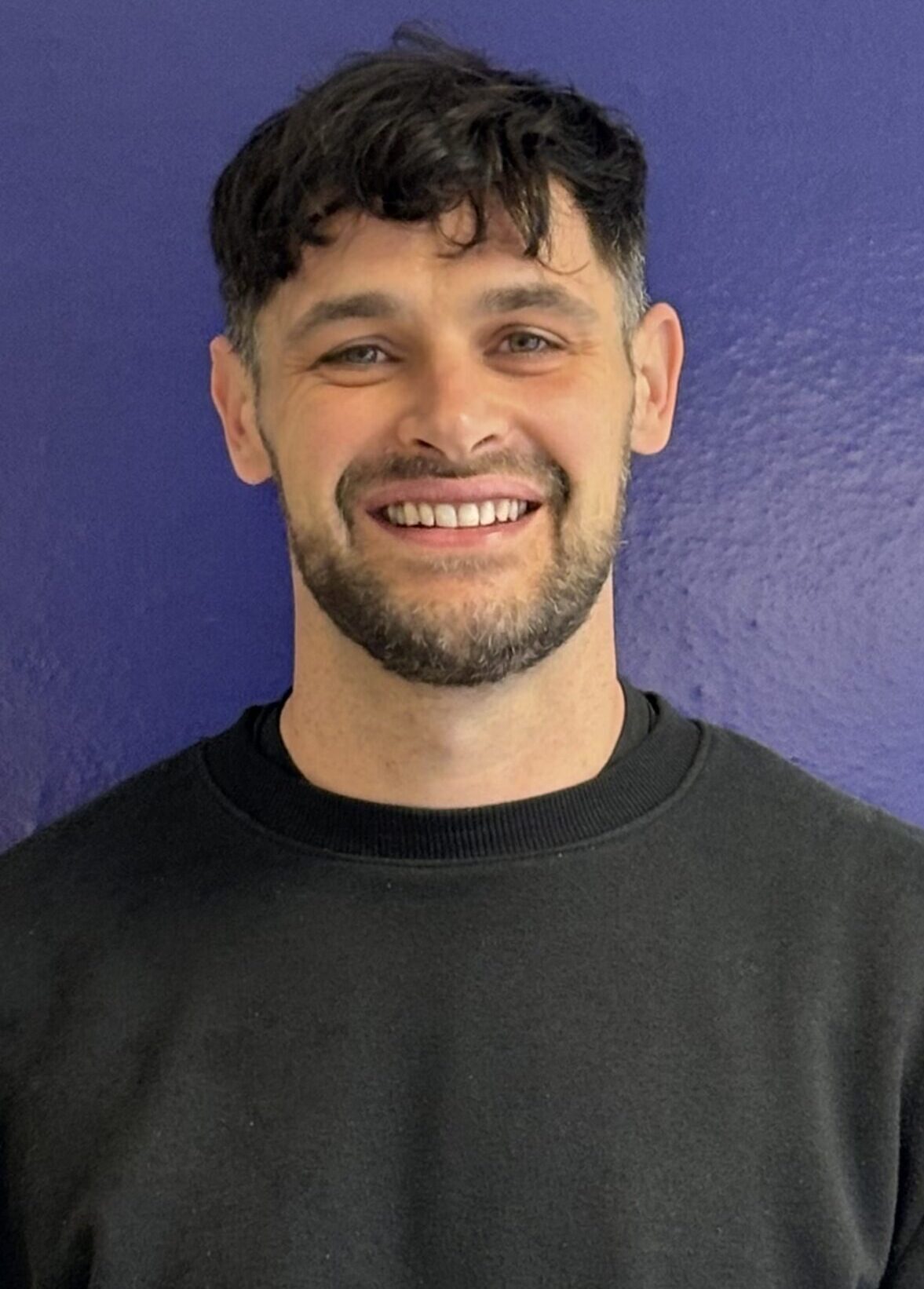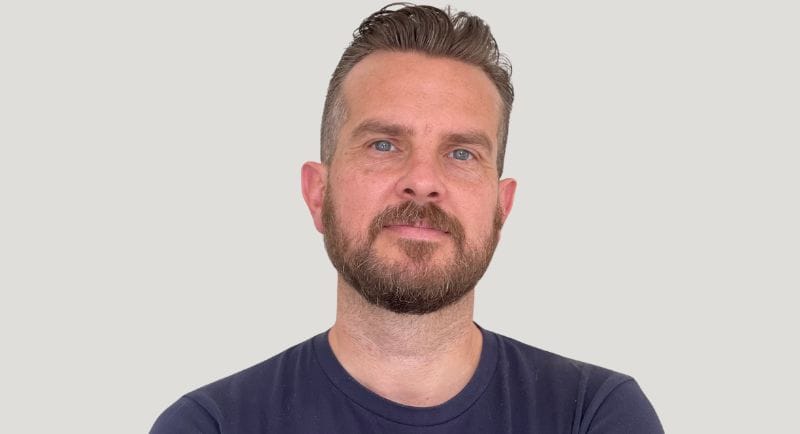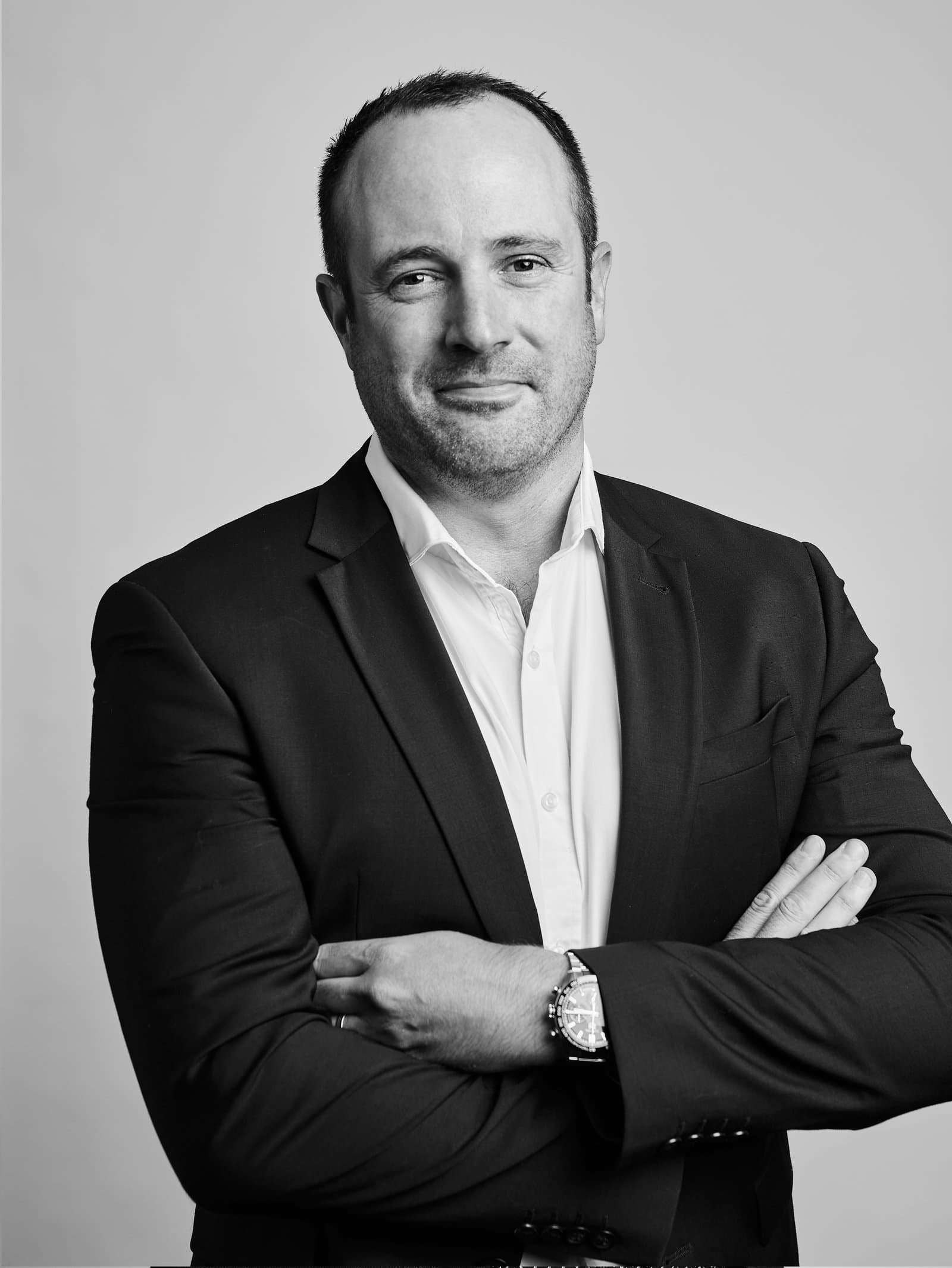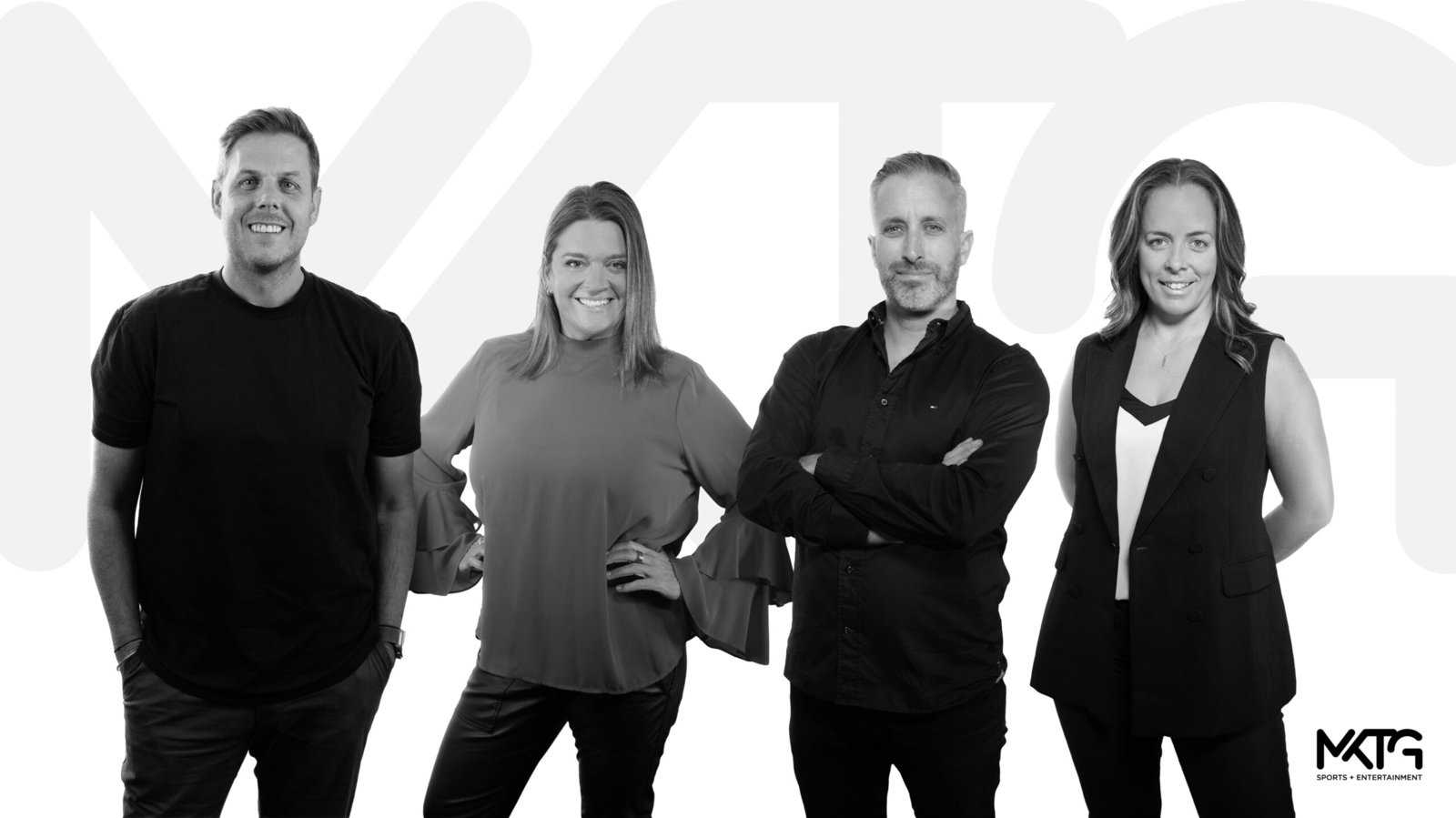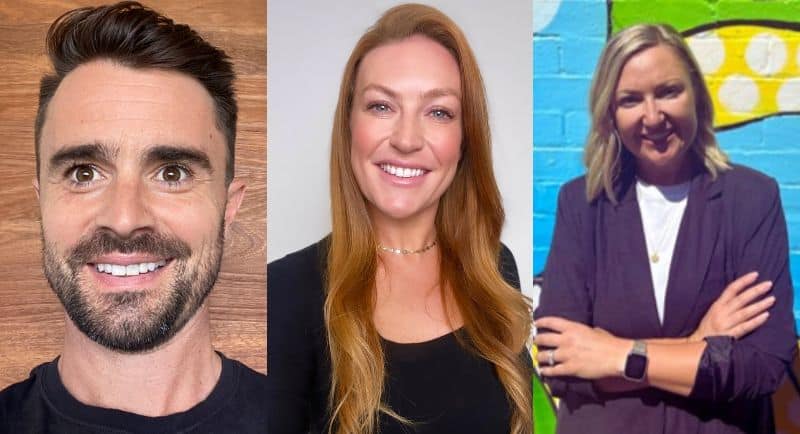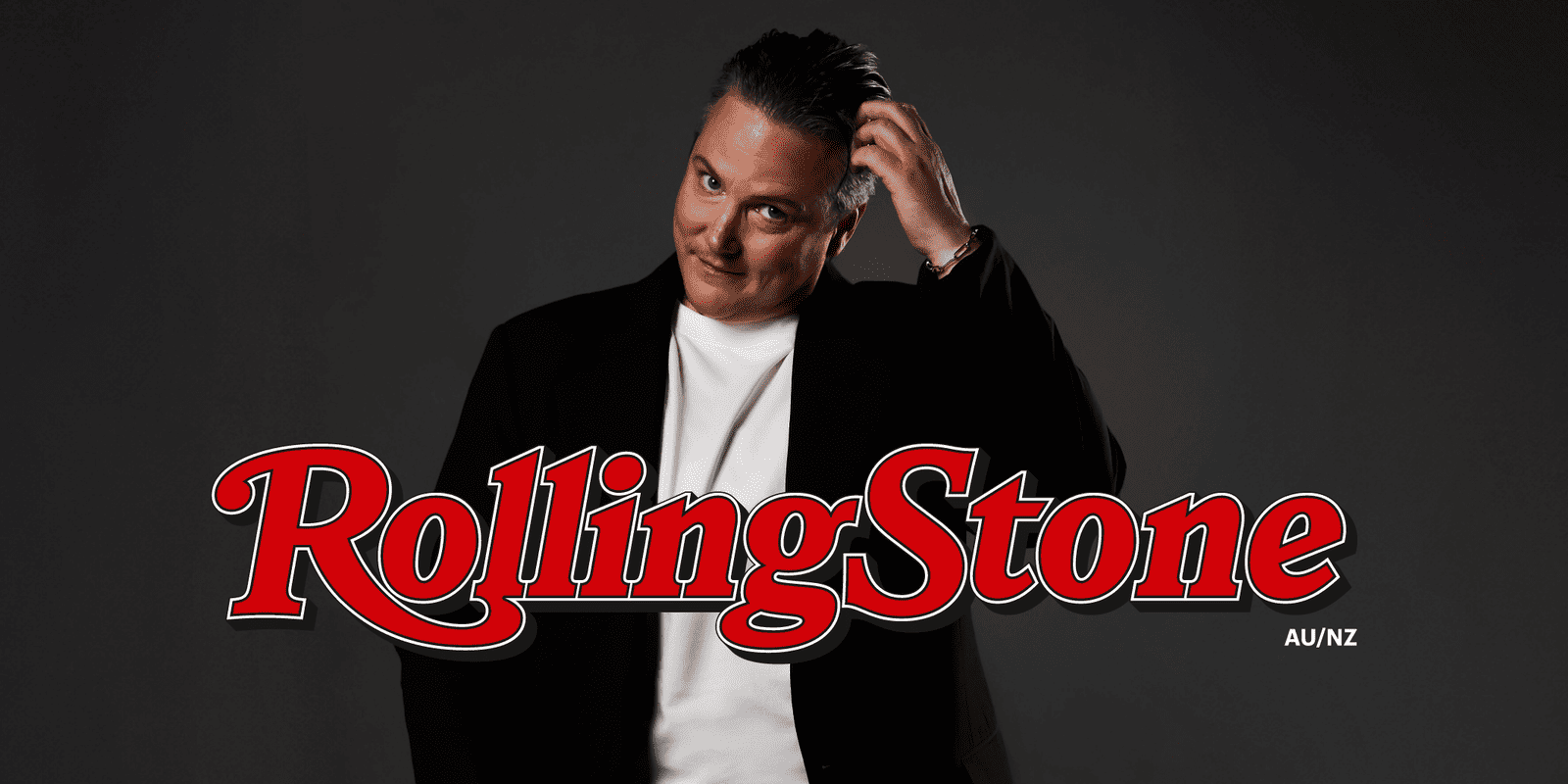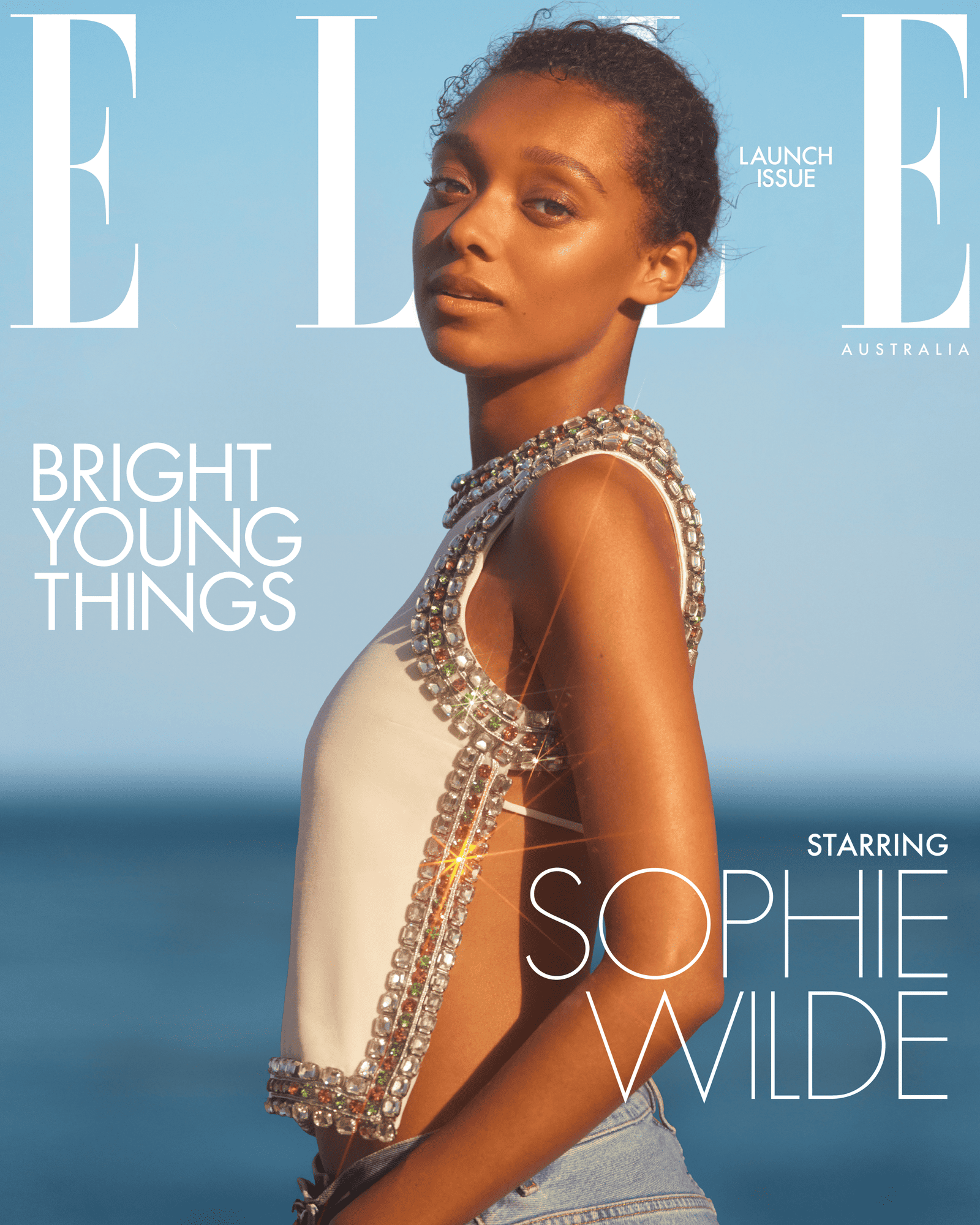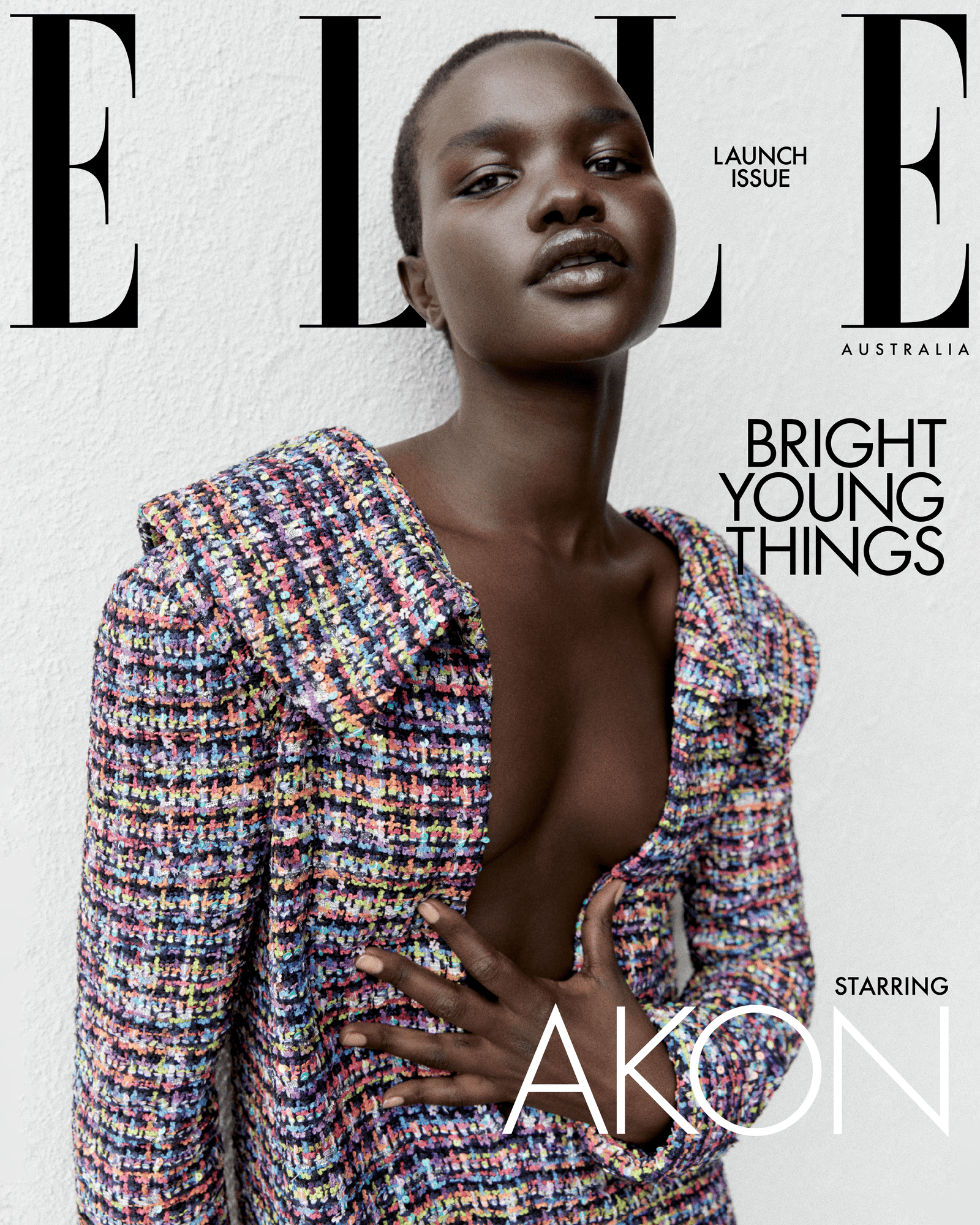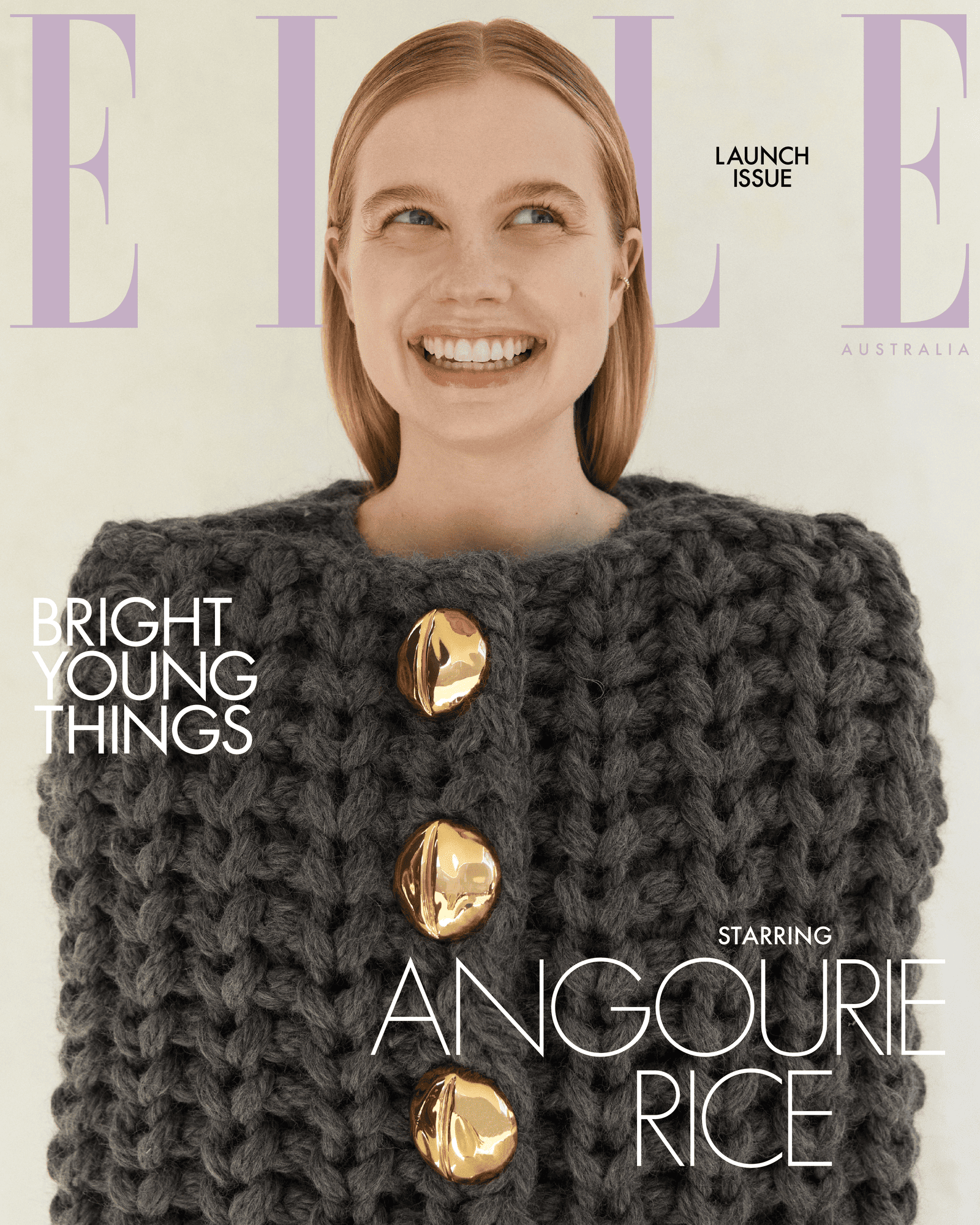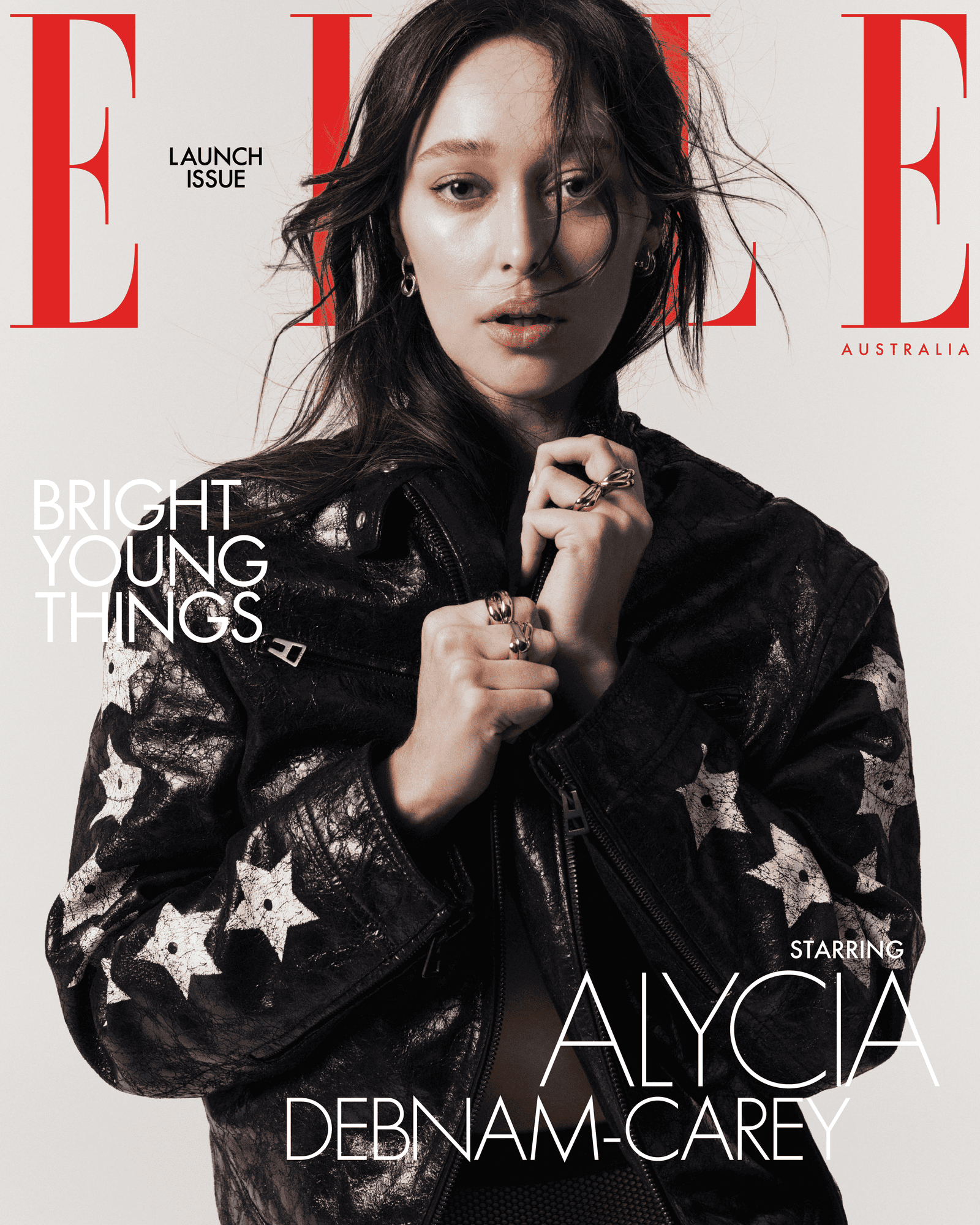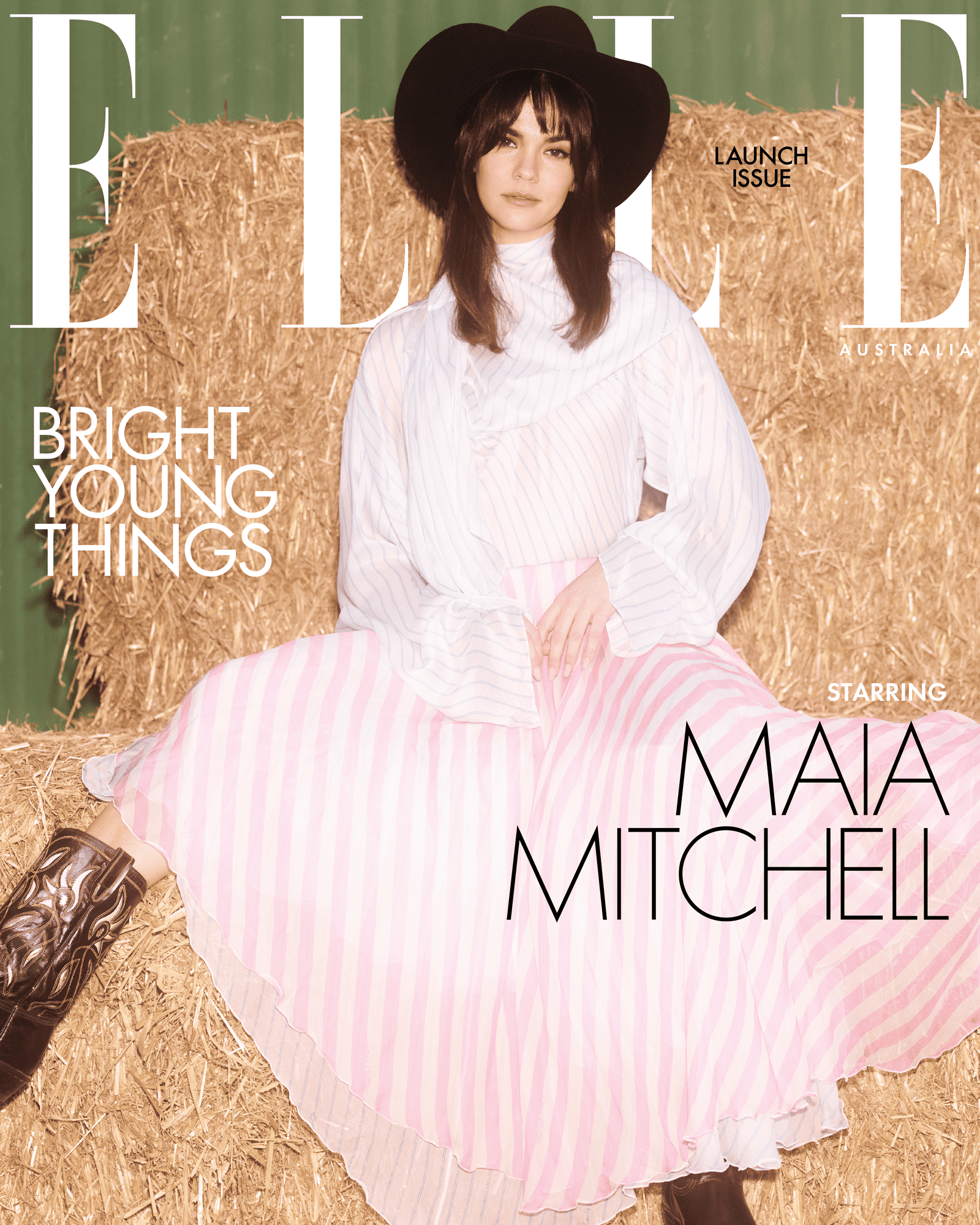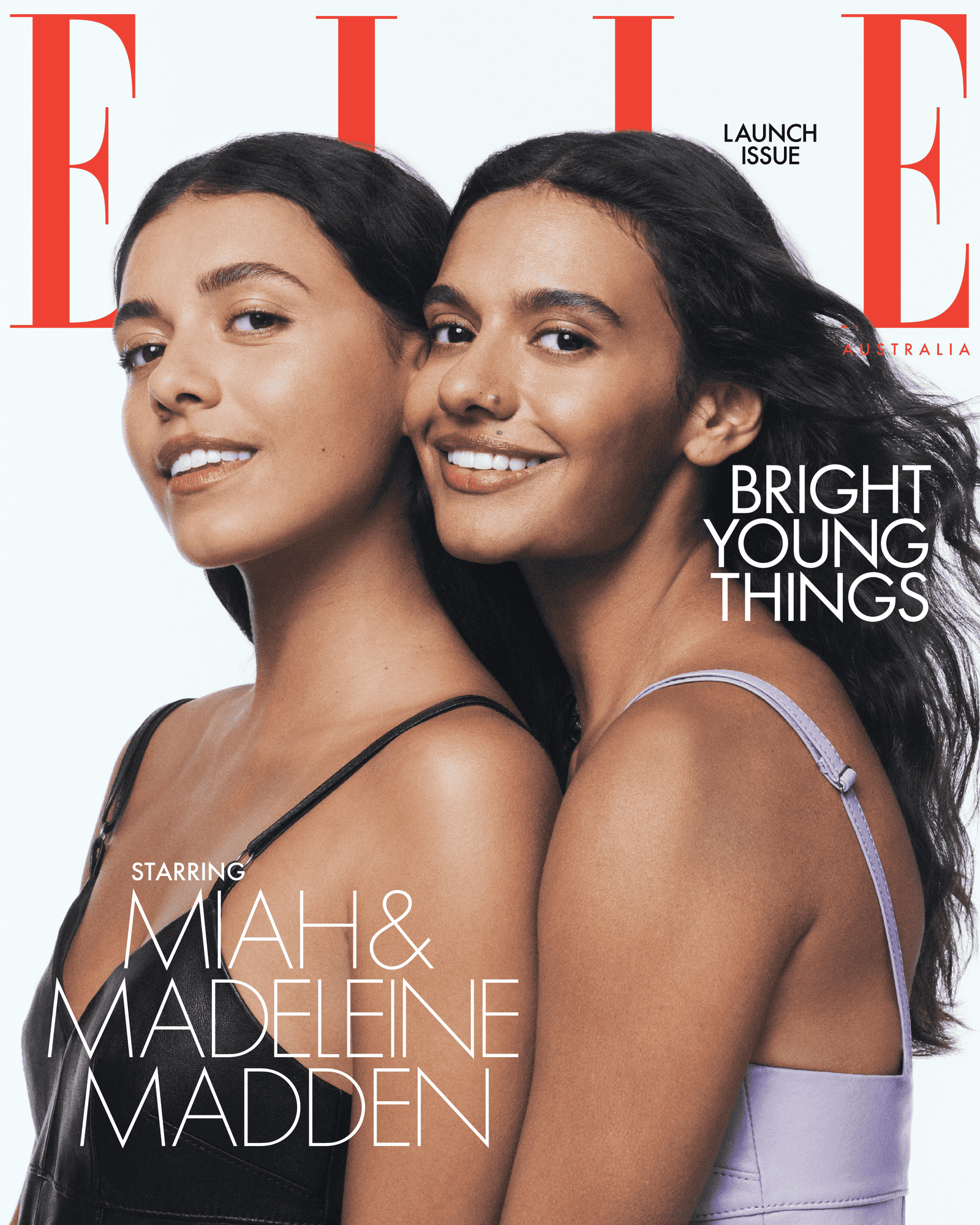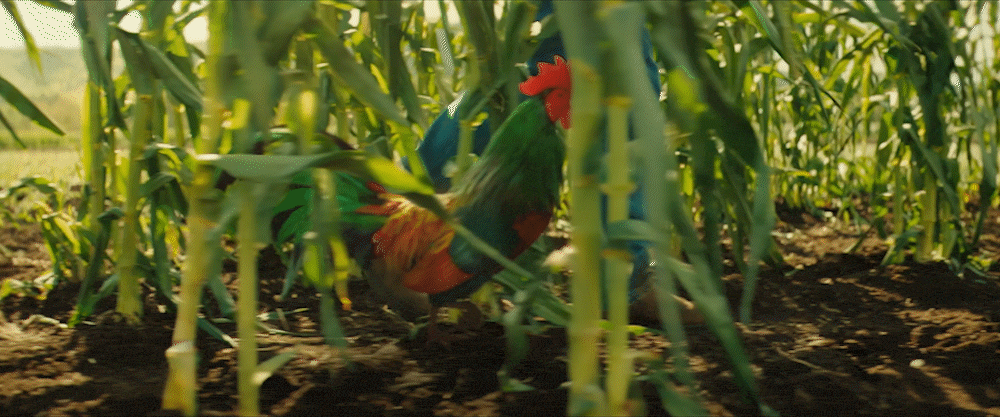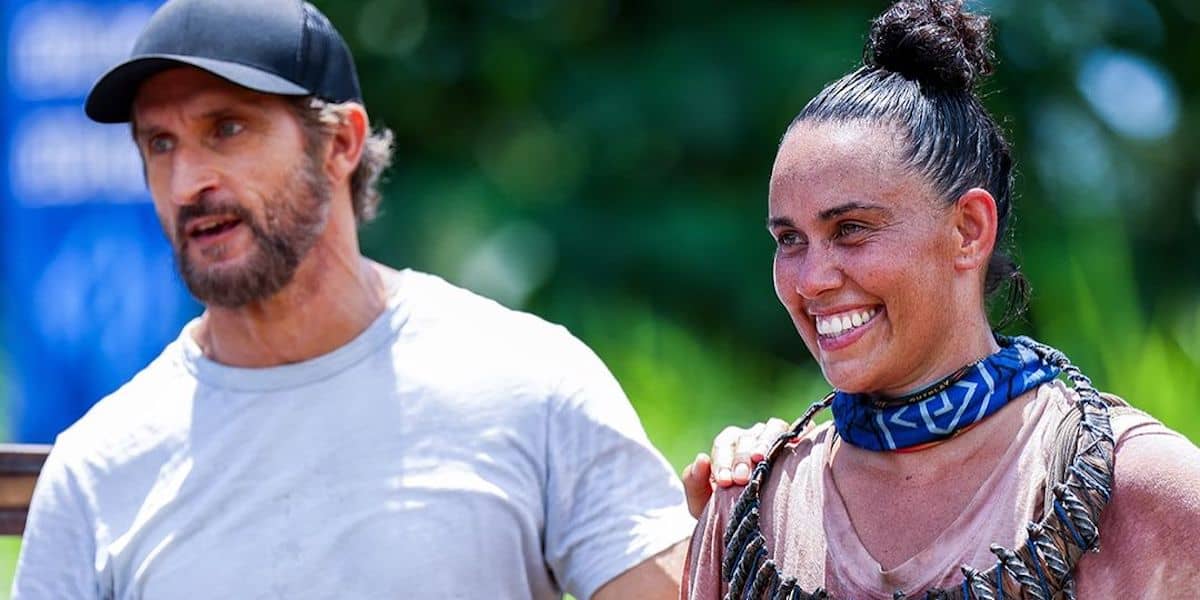Tuesday March 19, 2024
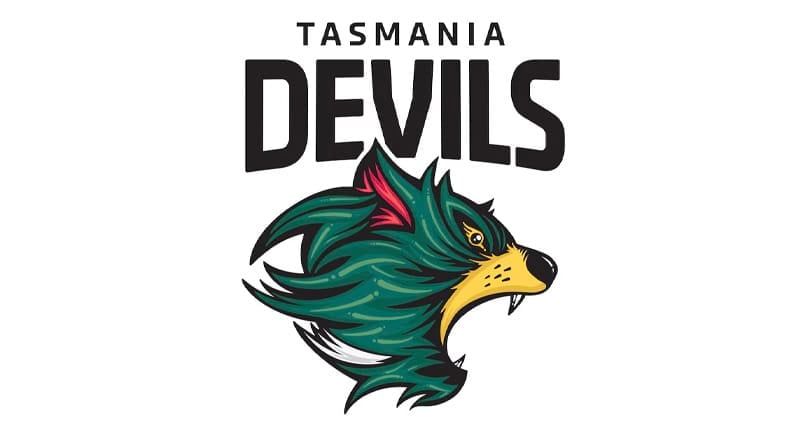
'They’ve already got some brand recognition': Branding the Tasmania Devils AFL team
“Sporting rebrands are fraught,” Nathan Birch, CEO of branding consultancy Interbrand, told Mediaweek in response to the launch of the AFL’s newest team.
“Not only do you have to consider the response of an incredibly emotionally invested fan base, but the most obvious names and creative treatments for clubs, especially new clubs, are more often already owned.”
After years of partnerships with Melbourne team the Hawthorn Hawks, Tasmania is finally getting its own AFL and AFLW team. Last night, the colours, logo, and foundation guernsey for the Tasmania Devils were unveiled ahead of the team’s official entry into the competition in 2028.
Branding the Tasmania Devils
The league’s 19th team will play in myrtle-green, primrose yellow, and rose red – colours associated with football in Tasmania as far back as 1908. At the centre is a yellow map of the state with a red T.
“What baffles me is on the founding guernsey, the insistence on putting a ‘map of Tassie’ on the front with a large T on it. Beyond the obvious vernacular pun, is this just a placeholder for a sponsor? It seems a bit of an afterthought,” Birch said.
“You won’t be able to stop everyone commenting on a sports brand, but when done well, it galvanises fans. When done poorly, it alienates them, and for a new team, that can spell disaster.”
Tasmania Devils vs Tasmanian Devils: Negotiating with Warner Bros. Discovery
Despite the Tasmanian devil being a native icon of the state, the naming of the team wasn’t straightforward. The phrase Tasmanian Devil was trademarked by Warner Bros. Discovery in 1984 after the Looney Tunes character – who was partially inspired by fellow Tasmanian, Errol Flynn.
“It’s testimony to the power of the brand that a US media company effectively owns the brand most associated with the island state of Australia,” said Birch.
“Sports branding and naming need to be conducted with a level of due diligence, consideration and care that goes beyond the simplistic views of the CEO or the CFO or, indeed, the incumbent fan base.”
Negotiations over the right to use the name have ultimately ended in the AFL’s favour. A statement released on Monday night said: “Warner Bros Discovery and the AFL have come to an amicable agreement and look forward to seeing footy fans across Tasmania support the AFL’s newest football club, the Tasmania Devils.
“The ‘Devils’ will no doubt be a club that unites the state and showcases the best of Tasmania.”
With the level of popularity the Looney Tunes character enjoys to this day, Birch said, “The team won’t be able to separate itself from the cartoon character created in the 1950s. Maybe that’s a good thing for a new team; they’ve already got some brand recognition and awareness, even if the lawyers at Warner don’t like it.
“Tasmania Devils vs Tasmanian Devils – I’m sure the lawyers at Warner’s will keep a close eye on that.”
There has been no news yet as to whether or not there was any cost involved in securing the team’s rights to use the name.
The Devils name has appeared before in the NBL, with the Hobart Devils existing from 1983-1996. When Tasmania made its way back to the basketball league in 2021, the team was blocked from using the Devils name due to the AFL’s trademark application. Instead, the basketball team goes by the Tasmania JackJumpers.
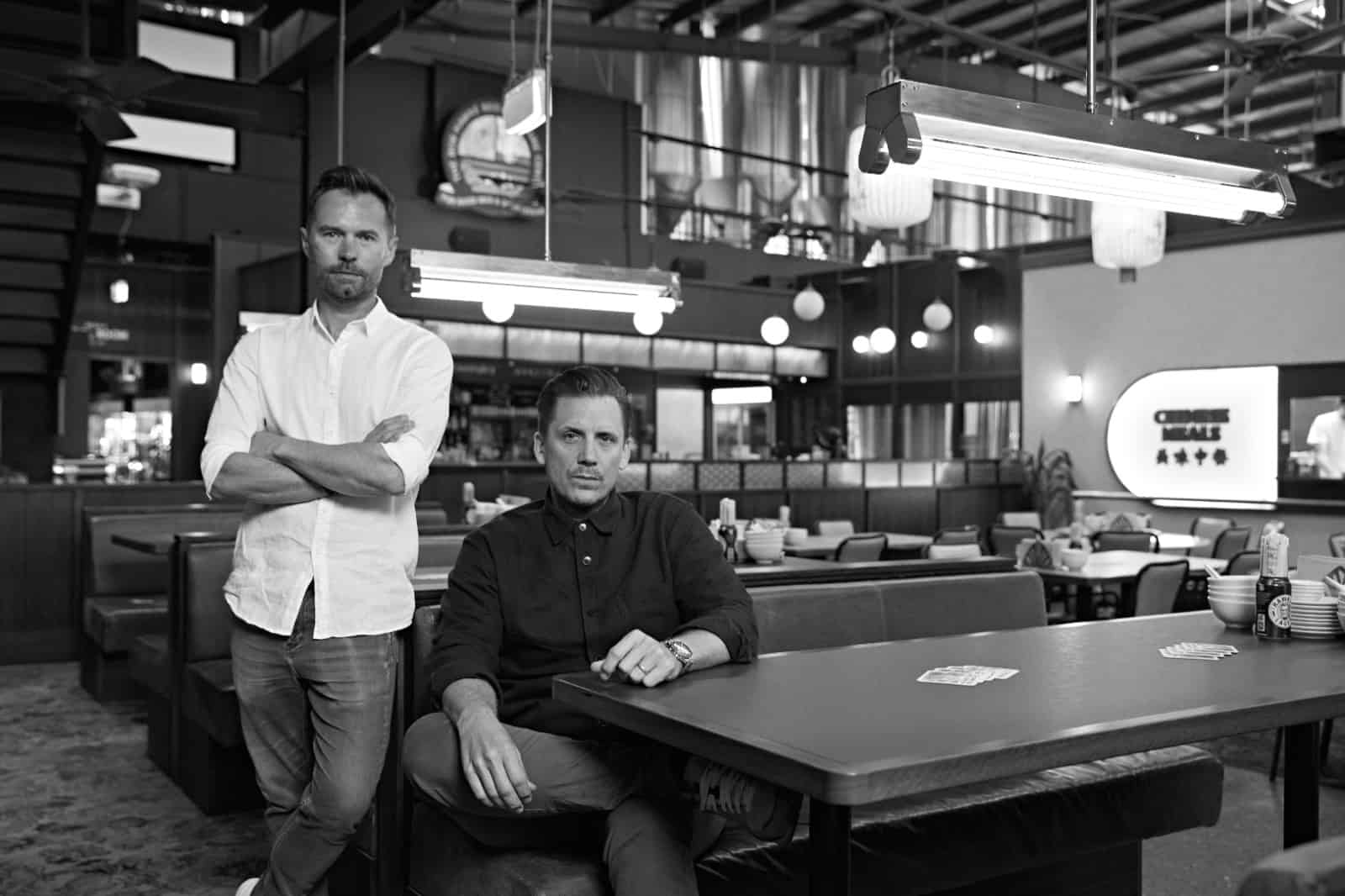
Hawke's Brewing and ex-Droga pair launch creative agency, The Ministry for Communications & The Arts
The co-founders of Hawke’s Brewing Co – David Gibson and Nathan Lennon – have returned to their creative agency roots, launching an independent agency called The Ministry for Communications & The Arts to service both their own brands and others.
“It was conceived inside Bob Hawke’s office at the brewery, so it just made sense to name it as if it were a department of his government,” Lennon told Mediaweek.
“We launched Hawke’s during the rise of the indie (craft) beer movement and strangely, it now feels like the time of the indie agency movement. Just like building a beer brand in a saturated market, agencies are going to need a real point of difference.
“Our difference lies in the fact that we’ve built value in some of the biggest companies in the world, and we’ve built value in our own brands. We believe MCA will bring a rare mix of creativity, commericiality and empathy. We’ve sat in just about every chair of our own businesses.”
Gibson and Lennon were formerly creative directors at Droga5 in New York, becoming start-up founders upon their move back to Sydney with the launch of Hawke’s Brewing Co and the Bob Hawke Beer and Leisure Centre, the Marrickville home of a pub and the Lucky Prawn Chinese restaurant.
While MCA has been set up primarily to service these brands, Lennon confirmed “we’re making our services available to partners outside our business.”
“We hope they see The Ministry for Communications & the Arts is seen less as a typical ‘agency’ and more as a creative problem-solver. While a focus will be on ‘brand’, we expect some briefs to stretch beyond traditional campaign work – from brand experience, to IP and brand creation, to innovative ideas that can be operationalised into a business for growth outcomes.”
Asked whether they missed creative agencies too much to stay away, Lennon and Gibson said it’s less about the business itself, and more about the culture.
“It’s always about the people and nurturing a ‘culture of care’ where we make impactul creative decisions for each other and our partners. We’ve experienced it at some agencies. We’ve done our best to create it in our own business. And we hope to bring that culture to anyone who works at or with The Ministry for Communications & the Arts.”
In November, Gibson told Mediaweek that if it wasn’t for the brave, or stupid, part of them, they never would have started the beer brand in the first place: “We’d worked so hard to get to a place in our careers where we were just at that tipping point. We could have gone on to get our boss’s job and our boss’s boss’s job and financial security, and still got to live in a favourite city. There were so many reasons not to do it.”
The duo said it all started at Droga. They had an idea. “Let’s ask Australia’s most iconic Prime Minister, Bob Hawke, to start a beer company with us. And before he gives us an answer, let’s quit our jobs, just to make it interesting.”
While MCA, their latest project, was spurred by a love for founding businesses and building brands, “our most potent realisation was that creativity can solve more than just the problems that clients typically give to their agencies. We have proof. It’s in the businesses we’ve built.”
Earlier this month, the pair launched a pokies machine for good, installing a gaming machine in the Marrickville business whose takings are donated to environmental charities. Gibson said of the idea:
“The Hawke’s journey started with Bob Hawke passing on his royalty share to help the company support environmental causes. Since then, every Hawke’s beer enjoyed has helped us keep that promise.
“The ‘Game for Good’ is a continuation of that spirit, while delivering an important message around our collective gamble with the environment. Ultimately, if the environment loses, we all lose. If it wins, we all win.”
—
Top image: Lennon (left) and Gibson
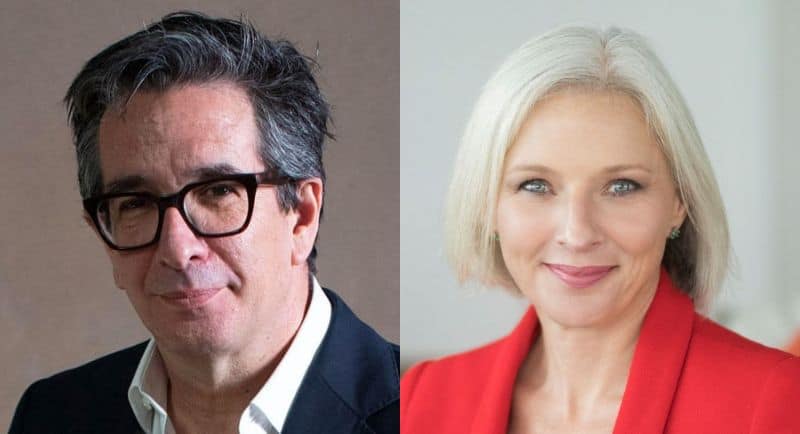
'Like a tobacco account on your CV': Woolley and Noble on Shell creative pitch
Shell Energy is pitching its creative account, but it has not come without backlash from industry heavyweights like Darren Woolley, who says “fossil fuels are becoming the new tobacco.”
“I know the money will be good,” Mediaweek’s marketing and agency editor-at-large and founder and CEO of TrinityP3 Marketing Management Consultancy said. “But they’re [agencies that pitch] going to find it increasingly difficult to get people to work on that type of account.”
Woolley told Mediaweek that the industry needs to be “very clear about the difference between working for a client and actively greenwashing the client’s claims.” And agencies pitching should not delude themselves if they think they can help the client “from the inside”.
“Any agency that is going for this business has to be very clear that they are going to be working with an organisation that is currently contributing huge amounts to the climate crisis.
“They’re getting employed to help spin this to help their client. I’ve heard many agencies say they we’re working with them [the client] so that they can understand where the consumer is and do more to reduce and I go ‘yeah, right’.”
The Shell sub-brand is the petroleum company’s renewables and energy solutions business in Australia, which claims to “work with customers on their decarbonisation journey.”
Nous, a Brisbane-based creative, branding and digital marketing agency, worked with Shell Energy on campaigns, including its Net Zero work in 2022. Creative agency Sense also worked on the company’s national campaign for its fuel brand, Shell V-Power, in 2021.
Belinda Noble, founder of climate activist group Comms Declare, added that “good creatives don’t want to sully their book with this kind of work. They want to work for exciting new companies of the future. Having this in your book is like a tobacco account on your CV. It’s not something that I think a creative at the top of their game would want to do.
“Anyone thinking of pitching for this account has to remind themselves that they’re the possibly complicit in enhancing the brand of a corporation that’s doubling down on oil and gas in the middle of a climate crisis.”
The Shell pitch generated a huge reaction from the industry online. Noble said that agencies looking to pitch should “prepare themselves for a backlash from not just inside their own agency, from staff that care about climate change, but from the industry at large, and of course, environmentalists.”
The agency that wins the Shell account, Noble said, will need to “tread a very, very fine line” when making any green claims on behalf of Shell under new greenwashing laws that call out high emissions industries.
Woolley concluded that “the industry needs to move forward” and said while petrol will still need to be sold, it can be done without lying to people.
“Don’t make claims that are just blatant lies. Truth well told should be the minimum.”
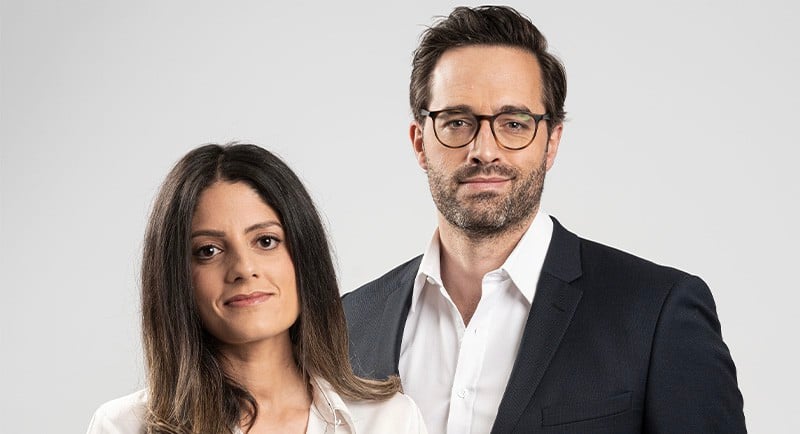
Paramount newsroom bosses focused on 'making more, not less' news
“People want to consume news, they want to consume more news, they just want to consume more news on different platforms,” Rashell Habib, Paramount’s head of digital news and strategy, told Mediaweek.
Habib was reacting to ACMA figures showing that 20% of Australians used social media as their main source of news in 2023, up from 17% in 2022.
With an audience of over 3 million people combined across its social platforms, Paramount’s YouTube channel has grown the fastest, with over 100% growth in the last few months.
“News has always gone through different iterations as they follow audiences – from radio, to newspapers, to digital, social,” Habib said, speaking about how Paramount responds to the shift in audience behaviours.
“People forget the adaptability of news. At its foundation, it’s storytelling – how you tell that story changes, not the story itself.”
Habib co-leads Paramount Australia’s news department with Martin White, VP broadcast news.
Whether news is being consumed on social media or in more traditional ways, White said journalists are “more important than we’ve probably ever been,” as the global community continues to make its way through what he calls “fairly unprecedented times.”
“Everyone’s got an aunt on Facebook who shares conspiracy theories and misinformation, so we need professionals to make sure the truth is as easy to obtain for audiences around the world as possible,” White said.
Habib added, “With the growth of platforms like Mastodon popping up with their own news ecosystem without any kind of validation, teaching younger audiences about news literacy has never been more important.
“Misinformation is becoming more weaponised, whether it be political parties or just your average Joe with an agenda.”
Balancing commercial interests
When asked how the Paramount newsroom balances commercial interests with editorial, White tells Mediaweek that the two operate separately.
“We’re a commercial organisation. We have a sales department, we have a sponsorship department, we monetise our content on various platforms – however, that has zero impact on our editorial decision-making,” he said.
“We don’t commercialise our editorial judgements. The most important thing is proper news judgement, bringing people the truth, and that is in no way influenced by any commercial decisions,” White said.
The future of AUNZ media
Across the ditch, the announcement that New Zealand’s Newshub would be shutting its newsroom by the end of June sent shockwaves throughout the industry in the region.
“I think it’s incredibly sad, and a blow to the New Zealand landscape. I don’t see that in the future for Australia – who knows what can happen, but I don’t see us going down that path,” Habib said.
For Paramount, White added, “We’re committed to local news, we’re committed to news in general and making more, not less. It’s a question of making sure that we’re on as many platforms as possible and reach as many viewers as possible. We don’t do that by shutting down.”
–
Top Image: Rashell Habib and Martin White
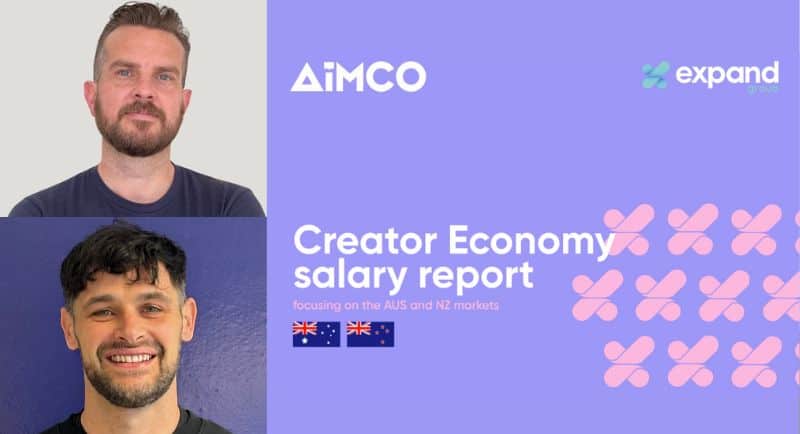
'Everyone laughed when I told them about this industry 10 years ago': Industry reacts to AiMCO salary report
AiMCO’s recently-released ‘creator economy salary report’ reflects the maturity of the influencer industry across Australia and New Zealand, and responds to a post-COVID environment in which salary expectations have dramatically increased, according to managing director Patrick Whitnall and key execs.
Whitnall told Mediaweek that it serves as a guideline for creators, talent agencies, and brands rather than regulation. “For us, this is a marker in the sand to give an open, honest, and transparent look at the types of roles and salaries based on the different roles people are looking at,” he said.
“The market is the market, and at the end of the day, a talent and a business will always be guided by what they need and if the talent is interested in that role. That will come down to market conditions and the talent wanting to move.
“I get that people sometimes pay more than the guidelines. That’s entirely up to them and their informed business decisions. This [the guidelines] is here to start the conversation. It’s not a way of holding people accountable to one way because everyone’s guided by market conditions.”
Since the report’s release, AiMCO council members have responded positively.
Among them, Ben Gunn, chief revenue officer of Fabulate, told Mediaweek: “We welcome any move that helps give greater credence to the sector, including this new report from AiMCO and Expand Group.
“From a talent perspective, we know that great talent is already seeking out the creator economy. We expect that interest will grow as marketers and brands realise the power and ROI of adding creator-led content to their campaigns.”
Clare Winterbourn, founder of Born Bred Talent, also told Mediaweek that the guidelines will be “immensely beneficial for numerous businesses” across Australia, but particularly New Zealand, where she noted that resources are comparatively limited to the Australian market.
She said the guidelines will significantly impact how the industry operates, especially in a post-COVID environment where salary expectations have substantially increased, particularly from individuals entering the influencer marketing and management space.
“Unfortunately, many lacked the necessary experience and skill set to justify such demands. This led to inflated salary expectations and industry inconsistencies,” Winterbourn added.
Winterbourn shared that Born Bred Talent already developed its own internal benchmarks and hiring guides based on earned skill sets and learned experiences; her agency is open to incorporating the AiMCO guidelines into its existing framework to ensure alignment with industry standards and best practices.
She added that AiMCO’s report is a step in the right direction, but more emphasis needs to be placed on transparency and accountability within the industry, particularly on pricing structures and client-agency relationships.
“Additionally, continued updates and refinement of the guidelines to adapt to the evolving landscape of influencer marketing would be invaluable,” Winterbourn added.
Whitnall noted that more will be done to expand this first iteration. He said that the council aims to delve deeper into the data next year to provide more value to members by exploring diversity, location, and roles.
The report was created in partnership with recruitment and business agency The Expand Group, which has worked on benchmark reports for the UK, US, LatAM, and Canadian markets.
Expand Group’s director of social and esports, Dan Openshaw, told Mediaweek that the influencer market in Australia and New Zealand is booming, fuelled by a growing digital landscape and savvy consumers. He noted that such growth brings challenges in talent acquisition and retention.
“This is why we feel that salary benchmarking is crucial for the region and the industry. It’s definitely a growing market with amazing players coming out of Australia and New Zealand.
“Compared to America and the UK, Australia and New Zealand are still a good 18 months behind. But I think it’s one of the most exciting markets out there.”
For Whitnall, establishing the benchmarking guideline indicates the growth and maturity of the market.
“It tells us that we are now at a point where a number of businesses are seriously investing in talent and people, not just in the sense of businesses that are purely focused on influencers as a key part of their business.
“We’re starting to see more marketers, brands, and businesses understand the value of influencer marketing within their ecosystem and marketing. That means they’re now investing in the need to bring that type of expertise, talent, and skill set into their business.”
Openshaw agreed and added that the industry has gone from strength to strength.
“Everyone laughed when I told them about this industry 10 years ago. But now, no one’s laughing; brands use them because they’re influential. Now, it’s one of the first places marketers go when looking to drive products and consumer behaviour.”
See also: AiMCO lifts the lid on industry-first salary benchmarking guidelines
–
Top image: Above, Patrick Whitnall
Below: Dan Openshaw
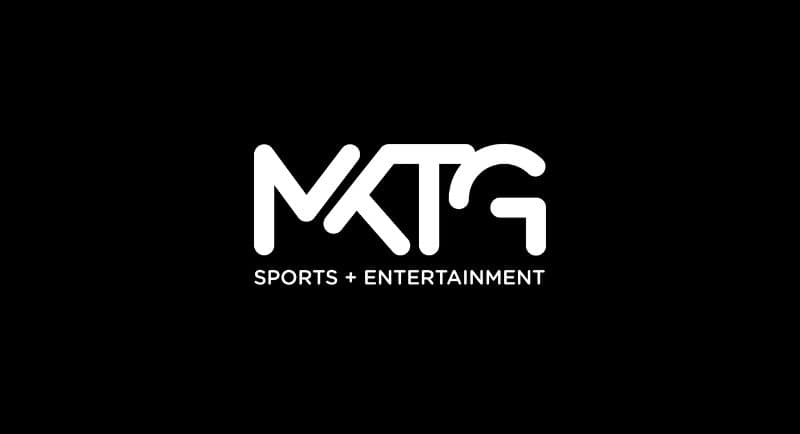
MKTG Sports + Entertainment launches PR and talent marketing division
Dentsu’s MKTG Sports + Entertainment has launched a PR and talent marketing division, and made a slew of appointments and promotions to the agency.
The agency has also implemented a centralised approach to its brand and rights holder servicing with increased production capabilities and a strengthened in-stadium sports presentation team.
Matt Connell, APAC MD of MKTG Sports + Entertainment, is confident in the agency’s new phase. He said: “Our strengthened and new offerings, combined with a refreshed organisation design that puts our customers at the centre of what we do, will create new and exciting value for our clients, partners, and our people.”
The PR and talent marketing team will be led by Stephanie Rudnick, who has overseen the personal brands of athletes, sports leagues, and recording artists, and is also the head of PR for Angel City Football Club in LA. She joined MKTG in January 2021.
“Our sports PR offering, led by Steph Rudnick, is poised to redefine how brands connect with their audiences,” Connell said. “Steph’s understanding of our market, in just her three years living here, and her vast network will be of great benefit to our current clients as well as teams, athletes, rights holders and brands across the region.”
Meanwhile, Ross Allen will lead MKTG’s creative services offering within the integrated marketing services team overseen by GM Jarrad Provis, plus Josh Hall has joined the team as art director.
Briana Doyle has been promoted to general manager to lead the transformation of the centralised servicing and delivery unit, the partnerships and events team.
The agency has also enhanced its sports presentation offering and promoted Monique Horan to lead the charge. She has been with MKTG for over seven years.
Rachael Sharratt steps into the newly created head of client services role. Her most recent role saw her leading complex commercial partnerships as a senior lead on the FIFA Women’s World Cup 2023 team.
Doyle welcomed Sharratt’s appointment, and said she is “well-equipped to lead the team to continue their incredible work on current and prospective clients” following the success of the 2023 Women’s World Cup.
Finally, Steve Whately has been hired in the newly-created role of head of business solutions. He joins from Greenroom Digital, where he was general manager across Australia and New Zealand. Whately has held senior commercial roles with Nielsen Sports, the Australian Sports Commission, and KPMG.
GM Jarrad Provis said Whately, “will play a vital role in driving growth for MKTG through solutions for our clients that leverage the full potential of our integrated capabilities.”
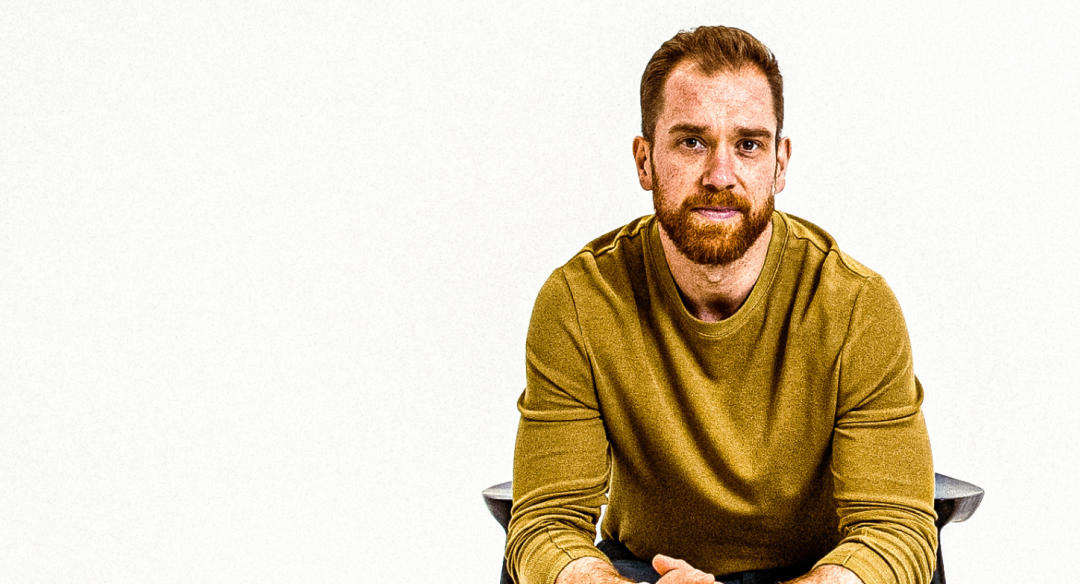
Ross Hastings: Marketing should be a culture, not a department
By Ross Hastings, managing director, Ne-Lo Business Design
The very essence of marketing is undergoing a profound transformation, reflective of broader changes in market dynamics, consumer behaviours, and technological advancements. This shift suggests that marketing can no longer be confined to a single department.
The evolution of marketing needs
The metamorphosis in marketing’s needs reflects a changing business environment where the 4Ps (product, price, place, promotion) have outgrown their original departmental confines. While anomalies, from PT Barnham to Phil Knight, mark the history of marketing, we’ve never before seen this company-wide approach at the scale we’re seeing now.
In a trend that’s most pronounced in the tech industry, ‘product’ has evolved into a distinct department and related practice, underscoring the need for specialised expertise in development and innovation.
Similarly, ‘price’ has, in many cases, transitioned into the realm of financial analysts, a move that underscores the strategic importance of pricing in competitive positioning and profitability.
‘Place’, encompassing the distribution and accessibility of products, has also evolved. With digital marketplaces and e-commerce sitting alongside traditional retail networks, the dynamics of place have become increasingly complex.
Among the 4Ps, ‘promotion’ remains most closely aligned with the activities of the marketing department itself, given its focus on communication and engagement strategies. However, the discipline of promotion has become more intricate in the digital age.
This integration of marketing functions across departments highlights the inadequacy of siloed marketing departments. Instead, a holistic, company-wide approach to marketing is necessary, where every employee understands how they contribute to a strategy informed by customer needs.
So, here’s the problem. We now have people working in departments who don’t identify as ‘marketers’ and don’t recognise their role in ‘marketing’, who are developing their own fundamentals. And we have people working in departments called ‘marketing’, yet they don’t control or have the experience to manage all aspects of marketing in a modern business.
‘Customer-centricity’: A synonym for marketing
Terms like “customer-centric” have gained prominence, embodying the principle that understanding customer needs and addressing them better than the competition leads to business success. That sounds a lot like marketing, right? Perhaps the term “marketing” comes with too much historical meaning associated with the marketing department itself, thus the emergence of alternative nomenclature.
Whatever the terminology, they’re all synonyms for a company-wide approach to marketing, representing an awareness that customer experience is no longer the sole responsibility of the marketing department and highlighting a cultural shift in modern organisations, where every employee is encouraged to adopt a mindset of putting customer needs at the forefront of all decision-making.
This language shift is important, highlighting that the desire is there – but perhaps lacking the model and methodology for success.
Brand reputation: A new age of custodians
Crucial to this transformation is an agreement that brand is the reputation of a business. Managing the myriad touchpoints that determine this reputation extends far beyond the capabilities of any single department. It necessitates a values-driven, aligned cultural mindset that embodies the fundamentals of marketing at every level of the organisation.
This shift underscores the necessity for CEOs and their executive teams to take collective responsibility for brand, leveraging the strengths and insights of various departments while maintaining a unified focus on delivering superior customer value.
Challenges and considerations
While the benefits of a marketing culture are clear, implementing it is not without challenges. Resistance to change, especially in well-established organisations, can be a significant hurdle. Aligning the entire company around a company-wide approach to marketing requires aligned leadership, a shared language, strong company mindset, and a clear change in methodology.
As the business world continues to evolve, the concept of marketing as a single department is becoming obsolete. Forward-thinking companies understand that maintaining an advantage in today’s competitive and rapidly changing environment requires removing distinctions between business and marketing strategy, and orienting every aspect of their operations around customer value creation. In these cultures, marketing permeates every aspect of the company. It becomes an organisational imperative ethos, and every employee understands their role in marketing and contributing to the brand’s reputation.
By fostering this culture of marketing, organisations can create more meaningful connections with their customers, drive innovation, and build a sustainable competitive advantage. This strategic reorientation not only redefines the role of marketing within the company but also sets a new standard for how businesses operate.
—
See also: Nina Christian: Marketing in the information overload age
Top image: Ross Hastings
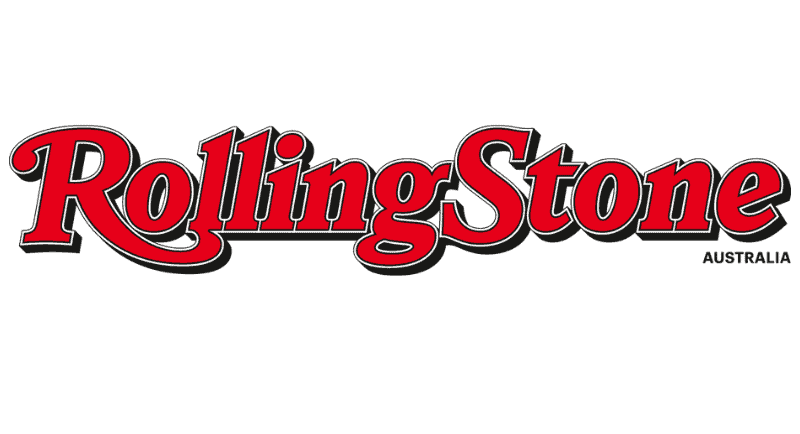
Rolling Stone AU/NZ snags James Jennings as print editor
Rolling Stone AU/NZ has appointed music and entertainment journalist James Jennings as its new editor.
Having spent a decade writing for the previous incarnation of Rolling Stone, Jennings is a former editor of Empire magazine and has written for titles and clients including NME, The Walt Disney Company, Foxtel, StarWars.com.au, SBS, and Jaxsta – which recently rebranded to Vinyl Group and acquired The Brag Media, publisher of Rolling Stone in Australia and New Zealand.
He currently writes gig reviews and musician interviews for The Sydney Morning Herald.
Of his new role, Jennings said: “To work with a crew of fellow passionate music lovers who are committed to honouring Rolling Stone’s rich history, while still pushing the title forward, is a dream come true and I’m incredibly excited about where we’ll be taking Rolling Stone AU/NZ in the future.”
The announcement accompanies the reveal of the magazine’s March-May issue cover, starring Australian comedian Hannah Gadsby. The issue hits newsstands across Australia and New Zealand from today, 18 March.
The cover story, written by Rolling Stone contributor Jenny Valentish, chronicles Gadsby’s story as they address the Netflix drama off the back of the viral but polarising 2018 special Nanette. The show was intended as a farewell to the industry that began a new era spawning two further specials, a Ted Talk, a Variety cover, and a memoir.
Rolling Stone AU/NZ editor-in-chief, Poppy Reid, added: “This is our first non-music cover since The Brag Media brought Rolling Stone back to Australia, so it was important that the person we chose truly captured a moment in culture. Hannah has been one of the most impactful Australian comedians of recent years, thrilling audiences with their discordant take on stand-up both here and overseas.”
Gadsby said: “It was never my dream to be on Rolling Stone magazine, certainly not the cover. Because why would you bother dreaming about something that’s highly unlikely.”

Air Force invites Australians to imagine a career above the clouds, via VML
VML’s new campaign for the Royal Australian Air Force breaks down misconceptions associated with joining the Air Force, using real-life flying footage as a draw for young Australians.
The campaign builds on the Air Force brand platform with an open invitation to every young Australian to experience the world that exists ‘up there’.
It’s the first work launched since the Defence Force took its creative and digital accounts to pitch. The lengthy pitch will run until September. VML has held the account since 2018.
Thomas Tearle, the CEO of VML Australia and New Zealand called out the “long-term partnership” in his comment on the new work.
“The latest campaign from our long-term partnership with Defence Force Recruiting will inspire a new cohort of young Australians to explore diverse careers in Air Force – from medical and intelligence roles, to aviation roles, and beyond, into space and cyber.”
Shot by DIVISION, the film showcases the Air Force’s fleet including F-35A Lightning II and F/A-18F Super Hornet jets, an E-7A Wedgetail early warning and control aircraft and a C-17A Globemaster heavy airlifter mixing single pilot and crewed assets.
Each of these aircraft was filmed air-to-air from an L-39 jet with a high-definition gimbal camera, the first time this piece of technology has been used in Australia.
The integrated campaign launches with more than 100 assets, spanning TV and cinema, OOH, radio, digital and social.
Credits:
Client: Defence
• Director General Defence Force Recruiting: CDRE Jan Wiltshire
• Director Military Recruiting: GPCAPT Chris Ellison
• Deputy Director Recruiting Attraction: WGCDR Fiona Van Der Snoek
• Deputy Director Recruiting Strategy & Engagement – Air Force: WGCDR
September Clare
• Staff Officer Recruiting Attraction – Air Force: SQNLDR Patricia Firth
• Staff Officer Recruiting Strategy & Engagement – Flight Sergeant Natalie
Cowell
• Head of Marketing: Justin Stanic
• National Marketing Manager: Zerlina Burns
• Brand Lead – Air Force: Tom Woods
• Marketing Officer – Air Force: Laura Rasmussen
Creative Agency: VML
• CCO: Paul Nagy
• Group ECD: Jake Barrow
• Creative Director: Robyn Bergmann
• Creative Director: James Wills
• Copywriter: Isabel Evans
• Art Director: Amanda Chen
• Head of Design: Lewis Brown
• Executive Producer: Rachel Rider
• Lead Producer: Stevi Russell
• Managing Director: Sarah Bailey
• Managing Partner: Vanessa Tout
• Group Business Director: Rhys Thomas
• Senior Account Director: Catherine Collins
• Account Director: Joy Hudson, Niall Morrison
• Account Manager: Russell Philip
• Strategy Director: Dan Brown
• Senior Strategist: Lauren Stoeckel
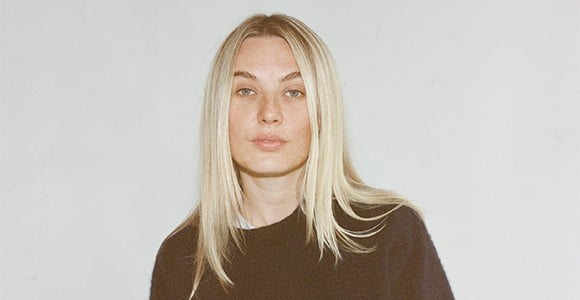
Behind all six covers of ELLE Australia's relaunch
The print edition of Are Media’s ELLE Australia is the latest of at least six magazine titles to return to magazine stands in the past year.
Whilst the magazine on stands features Sophie Wilde on the cover, the ELLE relaunch came with an additional five covers featuring a handful of Aussie women.
See Also: Are magazines back? The ELLE Australia relaunch team on the global magazine revival
Talking us through each of the covers, editor of ELLE Australia, Grace O’Neill, told Mediaweek: “We wanted to present a portfolio of digital covers that captured the next generation of Australian superstars.”
She admits that she always had a very strong idea of what she wanted out of the first cover.
“ELLE has this carefree, effortless spirit that we, the team, really wanted to capture. Shooting on the beach made perfect sense, especially for a cover that came out in March.
“Photographer Jordan Malane is a genius at capturing the perfect light. So one late afternoon we started shooting the cover look which featured a Gucci ensemble with crystal embellishments and low-slung jeans – that felt so ELLE to me – with Sophie standing in the water at Cronulla Beach. We shot for about an hour and captured the magical shot of Sophie with the starburst glistening off the top,”
Sophie Wilde
“To me, Sophie Wilde was always going to be the first cover choice with ELLE. As mentioned in my editor’s letter, I saw Sophie in Paris back in October about five minutes after the idea of editing ELLE Australia had first been put to me. It immediately struck me that if I were given the opportunity to edit ELLE Australia, Sophie was the natural cover choice: she is not only an extremely talented young actor (her recent AACTA win and BAFTA nominations only go to prove that), but she is a burgeoning style icon, and has a personality to go with it that is completely captivating and exciting.”
Akon Changkou
“Akon is currently one of Australia’s most prominent fashion models. She was working at the ATO when she decided to change her life up and pursue modelling. After being rejected by multiple agencies in Australia due to her height, she flew to Paris where she was quickly snapped up to walk for the likes of Louis Vuitton, Chanel, and more. We are so thrilled she shot a cover with us during her limited time back in Australia over Christmas.”
Angourie Rice
“Angourie is one of the most exciting and dynamic young Australian actors who, off the back of her star-making lead in Mean Girls, was a perfect choice to hero with a cover.”
Alycia Debnam-Carey
“Alycia is not only one of Australia’s most talented actors – I particularly loved her in The Lost Flowers of Alice Hart and can’t wait to see her in the Belle Gibson biopic, Apple Cider Vinegar – but she’s also a bona fide fashion darling as the history-making first Australian ambassador for the house of Dior.”
Maia Mitchell
“Maia is another homegrown superstar. Yes, she’s garnered a staggering 10 million Instagram followers, but even without her incredible social following, she remains a phenomenal actor. I particularly love the work she has done in supporting her hometown of Lismore during the floods in 2022; she has a heart of gold on top of being show-stoppingly beautiful and talented.”
Miah and Madeleine Madden
“The Madden sisters are Australian creative royalty. I had long admired Madeleine’s work, but hadn’t encountered Miah before her brilliant role in Paper Dolls last year. So it made sense to shoot Miah and Madeleine together, big sister and little sister, for their first Australian magazine cover together. They are pure joy and positivity!”
–
Top image: Grace O’Neill
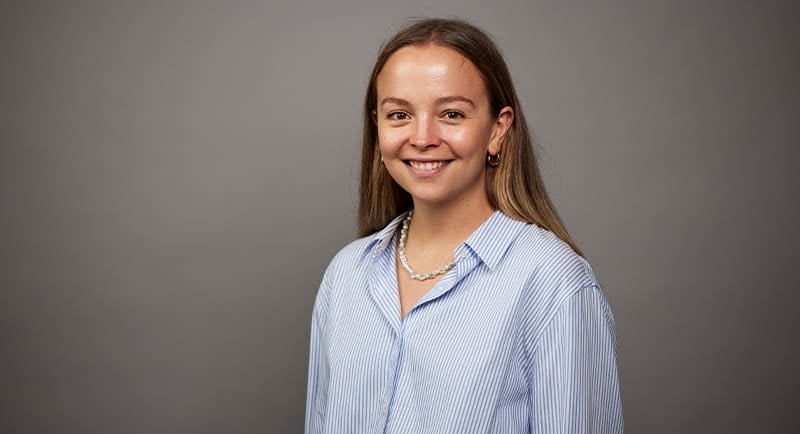
Kate O'Loughlin: Marketing lessons from the rise of run clubs
‘Obsessed’ is a monthly deep dive into social and cultural trends that can help marketers inform the way they think. Led by Kate O’Loughlin, Initiative strategist and self-confessed obsessive, ‘Obsessed’ will be a magic school bus to expand marketing mindsets and help brands remain relevant amongst an ever-changing cultural landscape.
This month, I’m obsessed with the run club “boom” happening across Australia.
Fitness is forever popular and fills feeds more than most content. However, increasingly, the tone and focus of this content is changing. In recent years, the focus of fitness addicts has been driven by traditionally ‘boutique’ workout classes, with choices like Pilates experiencing 250% growth from 2021 to 2022. This has been driven, in part, by lifestyle and fitness influencers, who promote classes or their own boutique apps such as Tammy Fit, Sweat, or Kic.
The simple, easy to access, and traditionally unglamorous sport of running has never been high on the fitness agenda… until now.
@riley.hemsonIts not that I dont believe you ? Doing it for the girlies ? Realistic running diaries ???♀️♬ original sound – Rileyj
While not an exclusive sport, running has been associated with the physically elite. Nothing about running a 21 kilometre half marathon screams ‘everyday fitness’.
In 2024, this changed, as influencers like Riley Hemson and Madii Bennett began documenting ‘realistic’ run diaries and broke down the misconception that running had to be quick. According to TikTok’s creative centre, #running is now the number two sports hashtag in the county (outperforming #rugbyleague and #pilates).
@madiibennett5 KAAAAA-CHOWWWWW ??♀️⚡️ #realisticrunningdiaries #runtok #beginnerrunner #postpartumrunning #plussizerunner #realisticrunclub #fyp #foryoupage #nikerunclub ♬ original sound – Madii Bennett
Coinciding with the seemingly increased accessibility of running across social media has been the boom of run clubs. In Sydney, the ‘Unofficial Runclub’ has gone from 50 to sometimes 1,000 attendees participating in the group’s early morning run. Bronte’s ‘The 440’ (a 5am Saturday morning run) has got hundreds of weekly attendees as well as spin-off clubs across Australia and the US.
There are clear takeaways here for brands. As marketers, we should all be obsessed with run clubs.
Accessibility is everything
The rising cost of living has put pressure on increasing the accessible options available to Australian consumers. Elite gym classes not only require money to attend, but are also accompanied by pressure to wear specific exercise brands or consume specific supplements.
Running, however, has a ‘get up and go’ mentality, made clear by the presence of varying fitness abilities on TikTok. To replicate this behaviour, brands should look to show varying product use cases now more than ever. By demonstrating multiple audiences using products or services in different ways, brands can increase their image of accessibility.
Connection > transaction
Too often, digital communities can’t permeate into consistent real life collectives. Running subverts this. While the trend of ‘realistic run diaries’ started online, it has been quick to emerge offline in the form of grassroots run clubs. As marketers, too often we forget that our shoppers are people before they are customers. Brands that facilitate connection by promoting and supporting the creation of third spaces will win out.
For example, could an e-commerce brand create physical ‘returns’ spaces to solve customer frustrations? Can online publishers promote IRL ‘article clubs’ for readers to meet and discuss content? The opportunities to bring our audiences together are there, we just need to be brave and take them.
The search for D&Ms
Deep and meaningful conversations (D&Ms) are not new, or exclusive to running. The joke of having D&Ms in a club smoking room still rings true. However, the rise of run clubs proves that deeper relationships are increasingly important to consumers, and brands should take note.
Powerfully true insights have never been more important. Brands that release products with a surface-level understanding of their consumers will risk failure. Now more than ever, it’s critical we hold ourselves to account and ask ‘why?’ when planning new product or campaign launches. Those who fail to do so will quickly be called out.
While we don’t need to purchase a pair of Hoka sneakers or gear up for a 5am run from Bondi to Bronte, marketers and brands alike should be running (ha) to embrace the lessons, and learn from the consumer behaviours, attached to the rise of run clubs.
As we see inflation fall over the coming year, it will be interesting to monitor consumer sentiment through the lens of running, and whether we see an increased push for connection still, or a reversion back to the status quo.
–
See also: Kate O’Loughlin: The Carnival World Cruise: brand titanic… or life raft?
Top image: Kate O’Loughlin
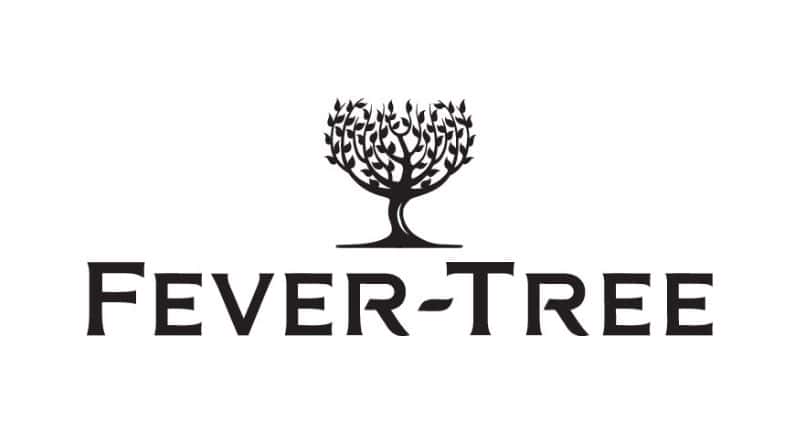
Bohemia appointed to Fever-Tree's media account
Bohemia, part of M&C Saatchi Group, has been appointed to manage the media planning and buying for beverage company Fever-Tree Australia.
Fever-Tree operates in both the on-premise and retail sectors and offers a portfolio of mixers, including tonic, sodas, cola, ginger, and cocktail mixers.
Paul Hutchison, CEO of Bohemia, said the media agency was looking forward to continuing Fever-Tree’s growth in its category brand awareness among Australians.
“We just need to get Fever-Tree into the hands and glasses of more Australians at home and when they are out and about. We will do this through handcrafting memorable media that moves growth audiences to purchase and consumption,” he said.
Caroline Wood, head of marketing at Fever-Tree, said Bohemia would help drive the brand’s next stage of growth.
“Throughout the pitch process, they [Bohemia] demonstrated unrivalled insight into our growth audiences and handcrafted media solutions that were bespoke to our brand, business and category.”
This win follows Bohemia’s relaunch of its agency positioning, “Moving people through handcrafted memorable media”, a year ago.
See also: Bohemia CEO Paul Hutchison on refreshing the brand and what comes next
The media agency’s recent successes since the relaunch include winning the Australia Retirement Trust, Schneider Electric, and Ryman Healthcare accounts.
Bohemia also added Kimberly Stafford as national client partner. Stafford joined the agency to help drive its end-to-end client experience, client lifecycle, and nurture enduring client-agency partnerships.
See also: Bohemia appoints Kimberly Stafford as national client partner
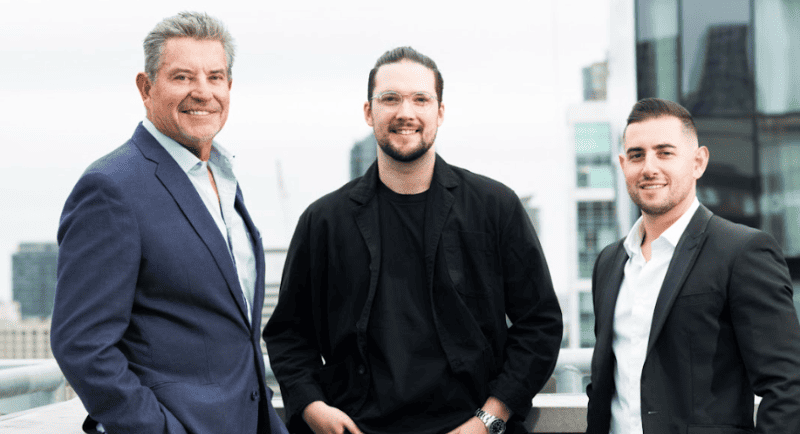
Antony Catalano among investors for predictive intelligence platform, Prophet
Australia’s newest intelligence business platform, Prophet, has launched with a line-up of industry heavyweight investors, including View Media Group’s Antony Catalano, Dentsu CEO Cheuk Chiang, and Seek co-founder Matt Rockman.
The company has bold ambitions to solve the $1 trillion pit in marketing and advertising budgets created by Google’s phasing out of cookies, paired with data blind spots.
To begin, Prophet is targeting the Australian market, which it said represents a $23 billion opportunity alone.
Catalano, the lead investor, said: “I’ve seen a number of tech innovations over the past two decades and our operations through our own national media group demonstrates more than ever the importance of media, marketing and organisational accountability and measurement.
“Prophet is on a whole new level. It isn’t just a game changer, it is a whole new game.”
Former Hyperloop global marketing lead Jordan Taylor-Bartels and former Ogilvy and VMLY&R Commerce CEO Sean Taylor helm the Melbourne-based company. Prophet was co-founded by mathematician Patrick Robotham, statistician John Strumila and full-stack developer Clyde So.
Taylor-Bartels said that while every business leader wants to make marketing budgets more efficient, the ability to do so with existing tech will only continue to decline.
“For a long time now, Marketing teams have had to resort to using data that doesn’t provide truly up-to-date information and doesn’t meaningfully assist predictive modelling and extensive scenario planning,” he said.
“We’ve taken sophisticated mathematical processes that represent a very real, long-awaited advantage for marketers, and packaged them in a platform that basically any brand decision-maker can use and understand. Marketing teams that don’t embrace Prophet will soon risk being left behind by competitors.”
Prophet’s launch also signals the first time organisations can run complex mathematical modelling in near-real time, removing the limitation of 60 to 90 data increments the market is currently forced to deal with under pre-existing platforms.
Top image: Sean Taylor, Jordan Taylor-Bartels and Paul Veltman
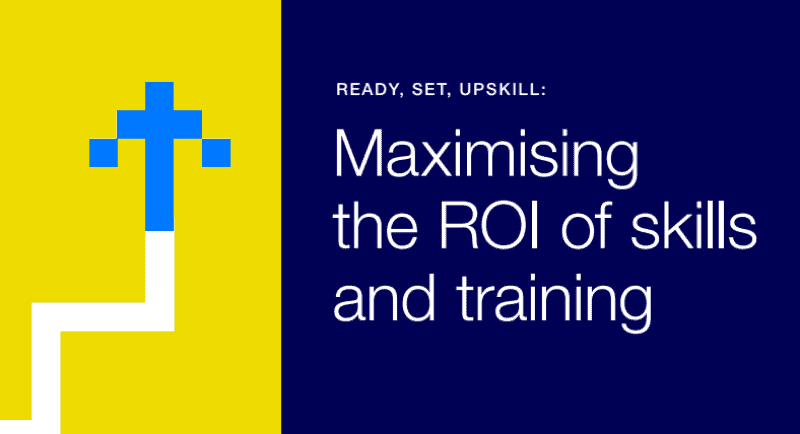
RMIT research: Most Australians don't believe gen AI is relevant to them
Almost half of employees have never used generative AI in their role, and 73% say it’s because they don’t believe it’s relevant, highlights a report from RMIT Online in partnership with Deloitte Access Economics.
The data contrasts with research by the Australian Computer Society, which showed 86% of all occupations will be affected by generative AI.
The ‘Ready, Set, Upskill’ report revealed across a range of digital skills, roughly a third – between 29-36% – of employees said they are lacking fundamental digital skills, or their skill level is out of date, while employers identified AI or machine learning as the top digital skill they lacked within their organisation, followed by data science, coding, and cyber security.
The report showed that the lack of digital skills across the workforce means businesses are willing to pay an 8% (or $5,408) for candidates with data and digital skills.
Nic Cola, CEO of RMIT Online, said: “Generative AI is unlike any past digital disruption. It will continue to transform the way we learn and work, level the playing field and create new roles and job disruptions.
“The digital skills gap Australia is experiencing has been further exacerbated by the emergence of critical technologies such as AI and we must not be complacent in our attitudes to reskilling and upskilling if we are to keep pace with our international counterparts.”
John O’Mahony, partner at Deloitte Access Economics, added: “Generative AI capitalises on aspects where traditional learning and development falls short.”
“Therefore, it will play a critical role in Australia’s skills transition. Employers can use generative AI to create tailored learning and development content for their employees which accelerates their learning speed and retention.”
Previous RMIT research revealed that the five industries facing a ‘short fuse, big bang’ scenario, where generative AI has a fast and significant impact, are: financial services, ICT and media, professional services, education, and wholesale trade. These industries account for 26% of the Australian economy, equivalent to nearly $600 billion in economic activity.
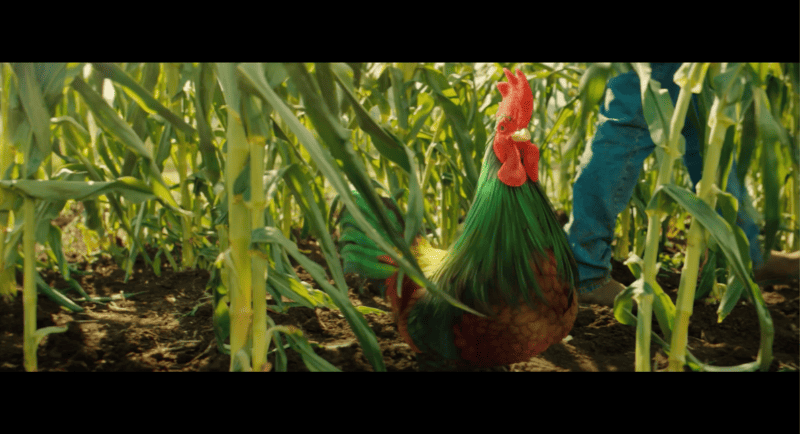
Kellogg's Corn Flakes launches first brand platform in five years via Bastion
Kellanova has launched the first brand platform for Kellogg’s in five years, with a campaign heroing Corn Flakes.
The new ‘Simple Goodness’ campaign, created by Bastion, brings to life the brand mascot Cornelius the rooster, in a tale of the journey of Corn Flakes from Aussie farms to Aussie tables.
Angela Morris, Bastion’s national CSO, explained the creative challenge was to build contemporary relevance into a 100-year-old brand.
“Our strategy was to hero an enduring brand truth – Kellogg’s Corn Flakes has always delivered deliciously uncomplicated goodness made with ingredients sourced from Aussie farms, and that’s more important to today’s consumers than ever.”
Cornelius has been featured on cereal boxes in homes around the world since 1960. In a global brand first, Cornelius has now been brought to life through CGI for the first time.
The campaign sees Cornelius going on a journey as he oversees Corn Flakes being made from Aussie corn and simple ingredients, before being enjoyed at Australian dining tables.
The brand campaign launches in Kellogg’s 100th birthday year – which is being celebrated under the platform of ‘100 years of Good Mornings’, also developed by Bastion Agency.
Leanne Bell, Kellanova’s marketing director, said: “For 100 years, Kellogg’s Corn Flakes has been made with corn sourced from generations of Aussie farming families. Our much-loved mascot Cornelius has been the face of the brand for nearly half its history. We’re thrilled to be bringing Cornelius to life, especially in our centenary year.”
The campaign is live across TV, OLV, digital, OOH, and social.
Credits:
Client: Kellanova
• Marketing Director: Leanne Bell
• Group Marketing Manager: Irene Anast
• National Marketing Manager: Natasha Sunderland
• Brand Manager: Demi Di Stefano
Agency: Bastion
• General Manager: Ana Lynch
• Group Chief Creative officer: Simon Langley
• National Chief Strategy Officer: Angela Morris
• Group Client Director: Katy Grey
• Head of Production: Jacqueline Archer
• Lead Senior Producer: Niki Bentley
• Creative Lead: James Gillespie
• Creative Lead – Copy: Lewis Farrar
• Senior Client Manager: Kirsty Wootton
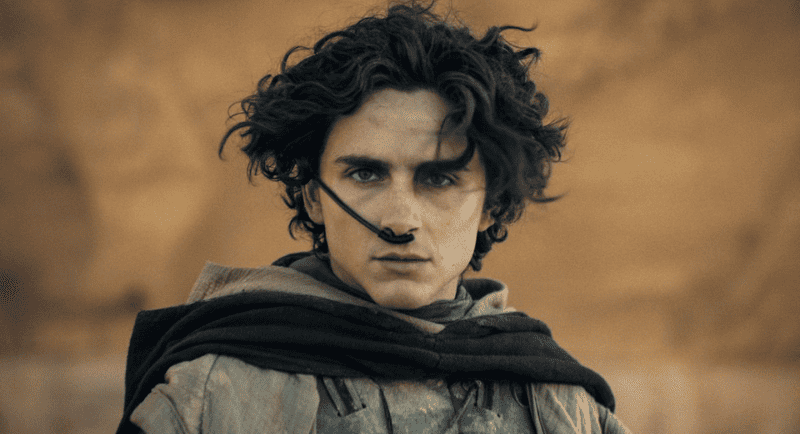
Box Office: Dune: Part Two holds #1, making $23.7m to date in Australia
• Dune: Part Two impresses with $3,982,255 in its third week, averaging $6,682 over 596 screens.
• This weekend, the Australian box office made $7,288,793, down -26% from last week’s $9,832,243.
TOP 5
1. Dune: Part Two – $3,982,255 (1)
Warner Bros. Dune: Part Two has stayed at number one for a third consecutive week, and it’s well in front. While still early into the year, the film is the highest-grossing of 2024 so far, but has competition ahead. Sony’s Ghostbusters: Frozen Empire opens this week and is expected to bring nostalgic fans to the cinemas, while July sees Deadpool and Wolverine release, which is expected to be one of 2024’s box office darlings.
Originally scheduled for release at the end of 2023 but delayed due to the SAG-AFTRA strike, Dune: Part Two opened exclusively in theatres, compared to the first film, which opened day and date in theatres and on HBO Max in 2021. The film took $3,982,255 in its third week, averaging $6,682 over 596 screens.
Synopsis: Paul Atreides unites with Chani and the Fremen while seeking revenge against the conspirators who destroyed his family. Facing a choice between the love of his life and the fate of the universe, he must prevent a terrible future only he can foresee.
2. Exhuma – $474,818 (debut)
Signal Pictures’ Exuma impressed, debuting in second this week. The South Korean horror film is written and directed by Jang Jae-hyun and stars Choi Min-Sik, Kim Go-eun, Yoo Hae-jin and Lee Do-hyun. The film took $474,818, averaging $10,103 over 47 screens.
Synopsis: The film follows the process of excavating an ominous grave, which unleashes dreadful consequences buried underneath.
3. The Great Escaper – $473,896 (4)
Transmission’s The Great Escaper is based on the true story of Bernard Jordan and currently holds a favourable 84% on Rotten Tomatoes. Starring Michael Caine and Glenda Jackson, the movie brought in $348,847 for its second week in cinemas, averaging $1,401 over 249 screens.
Synopsis: Bernard Jordan escapes from his care home to attend the 70th Anniversary of the D-Day Landings in France.
4. Imaginary – $477,335 (3)
Studiocanal and Blumhouse’s Imaginary dropped to fourth this week. While the film couldn’t replicate the success of Blumhouse’s Five Nights at Freddy’s, Imaginary has to date nearly made its budget back from its US domestic gross alone. The film made $343,231 and averaged $1,412 over 243 screens.
Synopsis: A woman returns to her childhood home to discover that the imaginary friend she left behind is very real and unhappy that she abandoned him.
5. Bob Marley: One Love – $344,208 (5)
For its fifth week in cinemas, Paramount’s Bob Marley: One Love biopic came in fifth. The film took $218,385, averaging $846 over 258 screens, down 38% from last week. This brings its total cume to $6,584,279.
Synopsis: Jamaican singer-songwriter Bob Marley (Kingsley Ben-Adir) overcomes adversity to become the most famous reggae musician in the world.
Top 6 – 10
6. Waitress: The Musical
7. Love Lies Bleeding
8. Shaitaan
9. Jatt Nuu Chusail Takri
10. Yolo
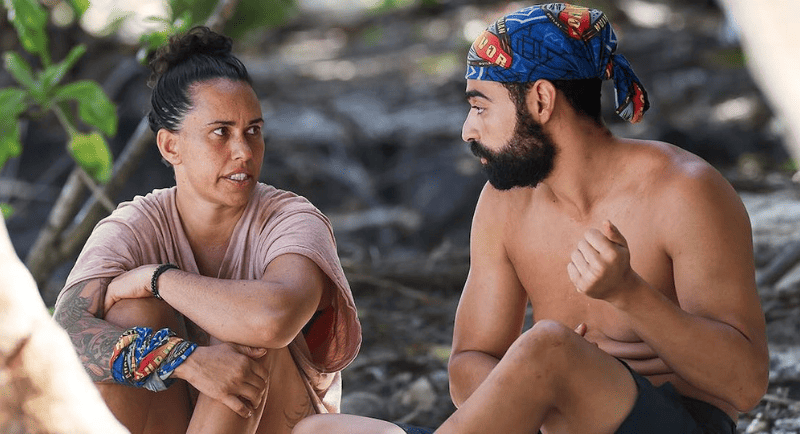
Australian Survivor's Kirby reveals if she would have taken Feras to final two
Australian Survivor favourite Kirby Bentley has revealed if she would have taken strongest alliance member Feras Basal to the final two after he orchestrated her elimination at last night’s Tribal Council.
Mid-way through the season, Kirby and Feras began to form a strong relationship, and both players made a pact to take each other through to the final Tribal Council.
While Feras didn’t uphold his side of the agreement, Kirby confirmed that she would have done everything in her power to make sure he was sitting next to her at the final.
“I would have taken Feras,” she said in an interview with Chattr. “If I won the necklace tomorrow, whatever the challenge is, I still would have taken him.”
Kirby said she wanted to take Feras, one of the strongest players in the season, instead of a weaker player to the end because of her own Survivor goals.
“I know the game that I’ve played, I don’t know all of what he’s done, so I was backing my game, and at the end of the day, the jury decides, and I felt I had them on my side,” she said.
“I wouldn’t claim to be the best if I couldn’t beat the best. So that’s why I was adamant about it being Feras.”
The winner of Australian Survivor is determined by an elimination jury, consisting of nine of the most recently eliminated castaways. If she made it there, she believed the votes would have favoured her over Feras.
“I was confident in my game and what I’d done,” she said.
“My social game was massive early on because I was big on connecting, and that was the reason why, even if I wasn’t voting with people two votes ago, I was still able to pull them in because I worked really hard on that.”
Kirby’s elimination episode recorded a total TV national reach of 993,000, a total TV national audience of 601,000, and a BVOD audience of 90,000 on 10 and 10 Play.
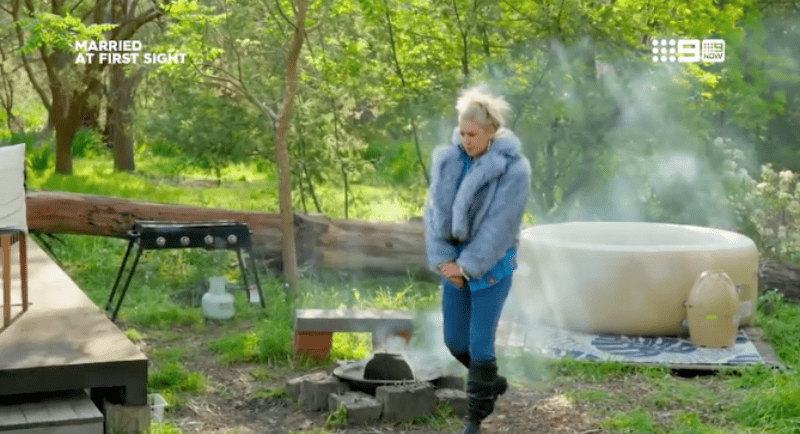
TV Report March 18, 2024: Lucinda experiences an eye-opening moment on MAFS
TV Report March 18, 2024:
Nine TV Report
Married at First Sight
Nine’s evening began with the beginning of Homestay Week on Married at First Sight.
Jayden and Eden are on the tip of everyone’s lips as the Commitment Ceremony the night before uncovered shocking information about Eden behind closed doors. The once seemingly picture-perfect couple have woken up frosty with each other and despite trying to resolve their issues before homestays, their conservation ends in awkward silence.
After weeks of letting his walls down, Timothy is experiencing an emotional hangover but hoping that returning home will be just what he needs, Timothy has brought Lucinda home to Melbourne. While Lucinda tries to be open-minded to Timothy’s bachelor pad and makes the most of spending time together, Timothy reverts back to putting his walls back up and pushes Lucinda away in the process.
In a catch-up with Timothy’s friends, both Rachel and Shane are delighted to hear that Timothy has been allowing himself to be vulnerable and they encourage him to continue opening up. Lucinda takes the opportunity to have a chat with Shane who reveals that Timothy is a doting partner in relationships. This is an eye-opening moment for Lucinda, she realises she wants a lot more for herself.
Despite her effort to talk things out over a picnic, Timothy announces that emotions and feelings are simply not for him and orders to keep things bottled up. He walks out mid-conversation and defeated, Lucinda packs away the picnic and leaves alone.
A Current Affair
Over on A Current Affair, a complaint threatens the future of a retired couple’s free clothing initiative and the team investigated what is behind the surge in card transaction fees.
Seven TV Report
Australian Idol
Over on Seven, Australian Idol saw Australia choose 23-year-old Denvah Baker-Moller, 24-year-old Amy Reeves, and 30-year-old Dylan Wright as their Australian Idol Grand Finalists.
The Top 6 opened the show with a performance of Giant by Calvin Harris and Rag’n’Bone man, before hosts Ricki-Lee and Scott Tweedie announced each contestant would perform again solo.
The episode farewelled Trent Richardson, Ivana Illic and Isaac McCallum with Ivana admitting: “Obviously, you want to go all the way but that’s not what this is all about. I’ve gone out there and showed Australia who I am and who I want to be as an artist.”
Home & Away
Before Australian Idol was Home & Away as Roo proceeded with caution, Theo feared for Valerie and Felicity rolled up her sleeves.
10 TV Report
The Project
The Project on 10 looked into the real estate underquoting crackdown, Jacqui Lambie taking down the new Tasmanian stadium plan and welcomed Lainey Wilson to the desk.
Australian Survivor
On 10’s Australian Survivor, Raymond missed his chance at making it to the grand finale as he was eliminated and didn’t make it to the final three.
Monday night’s episode saw old alliances tested as Raymond and Feras proved loyal to the end while Mark and Caroline continued their saga of on-again, off-again allies. Caroline beat Raymond in a small fire-making challenge to enter the top three, sending Ray home.
ABC
7:30
On 7:30, the program investigated the HECS-style loan system being proposed to help homeowners invest in solar energy and looked into the unsafe conditions surrounding food delivery apps.
SBS
Finding Your Roots
Henry Louis Gates maps the family trees of actors Brian Cox and Viola Davis, uncovering records from workhouses in Scotland and slave plantations in South Carolina that reveal individuals who battled to build a better life for their families.
Data © OzTAM and Regional TAM 2024. Not to be reproduced, published or communicated (electronically or in hard copy) in whole or in part, without prior written consent of OzTAM and Regional TAM.
Business of Media
NSW police turns to Bruce Lehrmann producer for top PR role
It was all but inevitable that the spinner would shoulder the blame for Webb and the police force’s recent unforced gaffes and errors around briefing the media and public on crimes. Still, that leaves a vacancy at one of the most influential PR roles in the state. NSW police media controls the drip-feed of information to news outlets and their police beat reporters.
NSW police has turned to Seven Spotlight veteran producer Steve Jackson to take on the top PR role.
Elon Musk defends stance on diversity and free speech during tense interview
The Tesla chief executive was openly irritated by Lemon’s line of questioning during the hour-long video interview, published on Monday.
Responding to a question about his prescription for ketamine, Musk said: “It’s pretty private to ask somebody about a medical prescription.” He said he took the drug to address “a negative chemical state in my in my brain, like depression”.
Sports Illustrated finds publisher for print edition
Authentic Brands Group said Monday that it has formed a long-term partnership with Minute Media and handed over publishing rights for the Sports Illustrated brand across its print edition and digital platforms.
Minute Media’s license is set to initially run for 10 years, with options for two 10-year extensions that could see the digital-media company publishing the 70-year-old magazine into its centennial.
Radio
Spills and thrills in Australia’s biggest listed radio deal
To his credit, while he was bagged for his “just say no” defence, he got suitor and long-time radio adversary ARN Media to bid against itself and pay an extra 10 per cent.
If Murray can get the stronger-together-type deal formally signed in the coming month or so, his renegade shareholders will save his head from the chopping block. That’s about as good as it gets from here.
Inside the ABC’s call to take Lattouf off-air
Lattouf initiated legal action against the national broadcaster, claiming she was unlawfully terminated for sharing political opinions in relation to the Israel-Gaza war and that her race was also a factor. Her case was heard in the Fair Work Commission this month, with a decision yet to be handed down.
Television
‘It’s so unlikely, yet so perfect’: Wild child Robert Irwin calls the shots
“What if I have the camera down at my waist, like this,” says Irwin, who is a keen photographer himself.
Are you always this high energy, I ask the 20-year-old, who is about to step into the co-hosting role previously occupied by Chris Brown on Ten’s I’m a Celebrity … Get Me Out of Here, alongside Julia Morris, whose own high-wattage performance style might finally have met its match.
Sports Media
Eddie McGuire sheds light on the sport business conference launching in Melbourne today
McGuire is the director of SportNXT, and told Ross and Russ “you couldn’t get better timing” for the conference.
“We’ve got to have a new way of thinking about these things, otherwise we’re going to get left for dead,” McGuire toldsaid.
The detail in the Devil: Why the AFL’s newest club fought so hard for its name
Amid a launch held at six Tasmanian sites and streamed live to pubs and clubs across the state, the Devils’ chairman Grant O’Brien joined Richmond legend Matthew Richardson in Devonport to confirm the club will wear a traditional myrtle-green jumper, also featuring primrose yellow and rose red. The front of the foundation jumper will have a yellow map of the state emblazoned.
“It’s a massive moment in our rich state history,” Richardson, who played his junior football with East Devonport, said.

